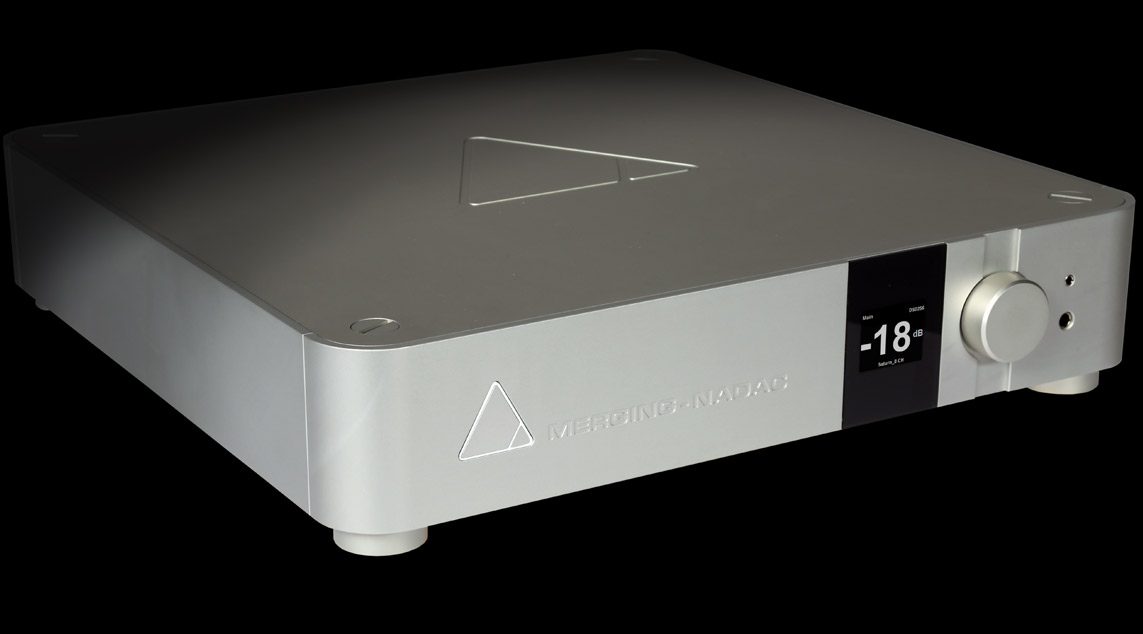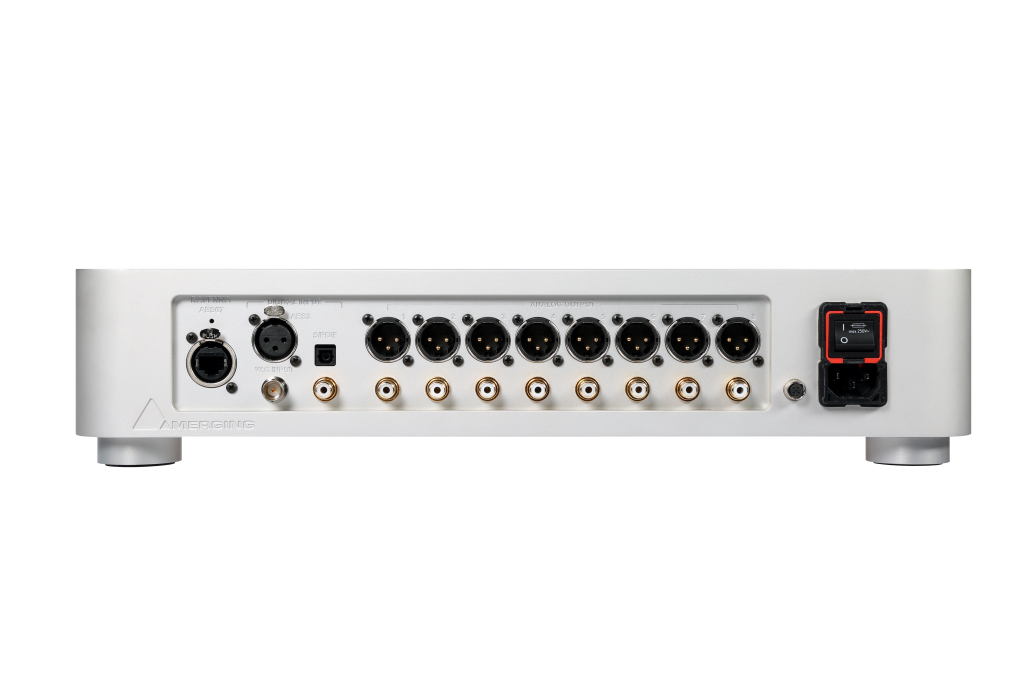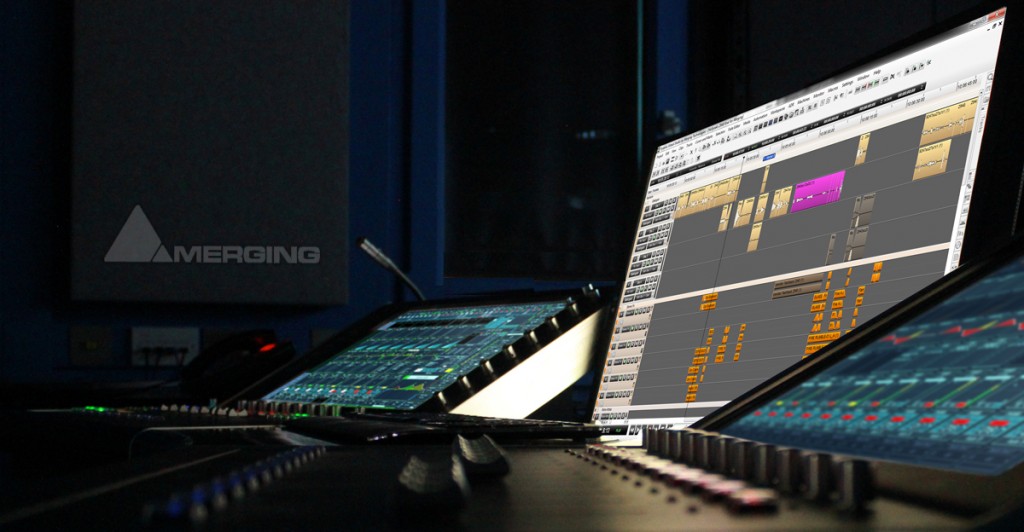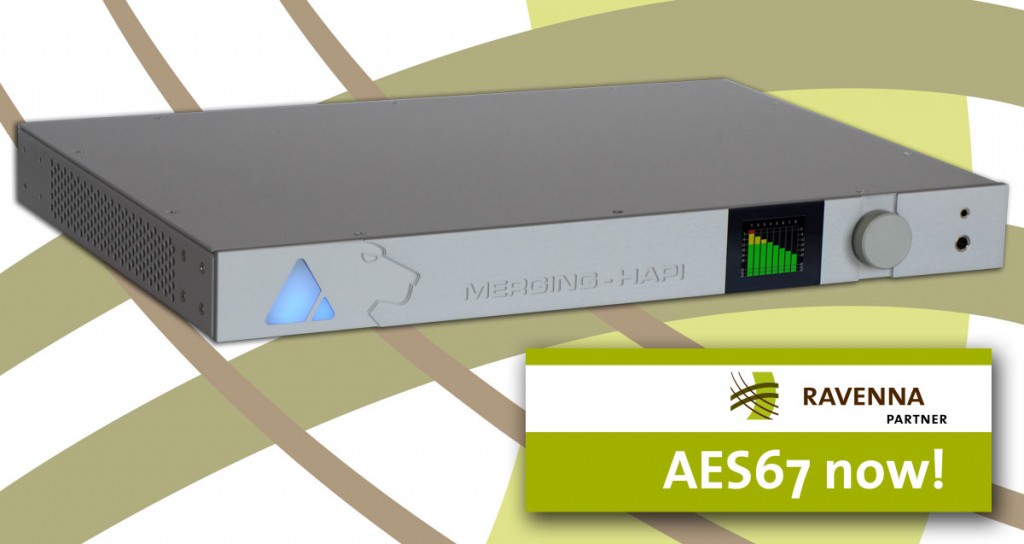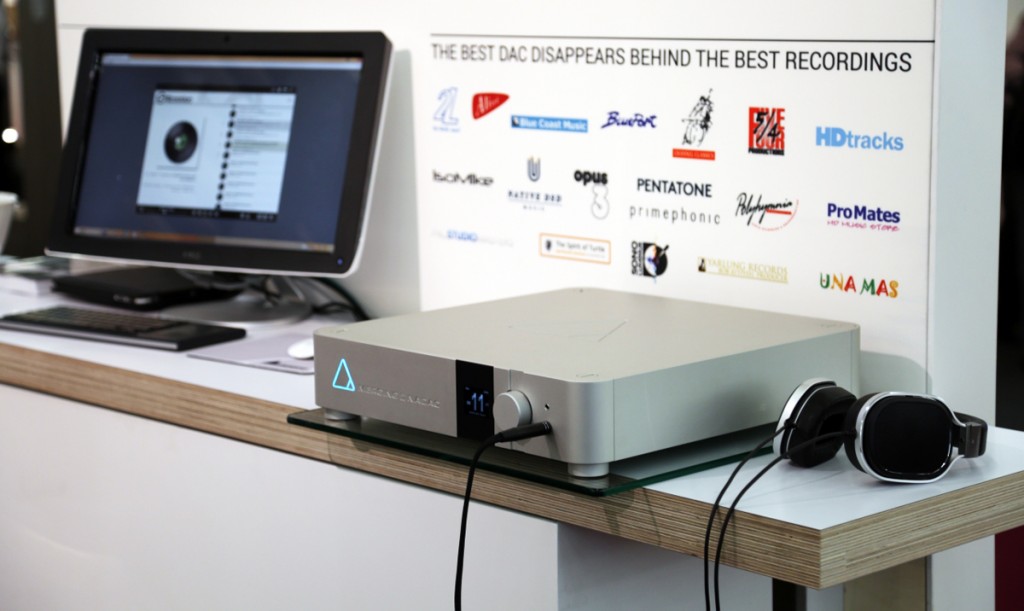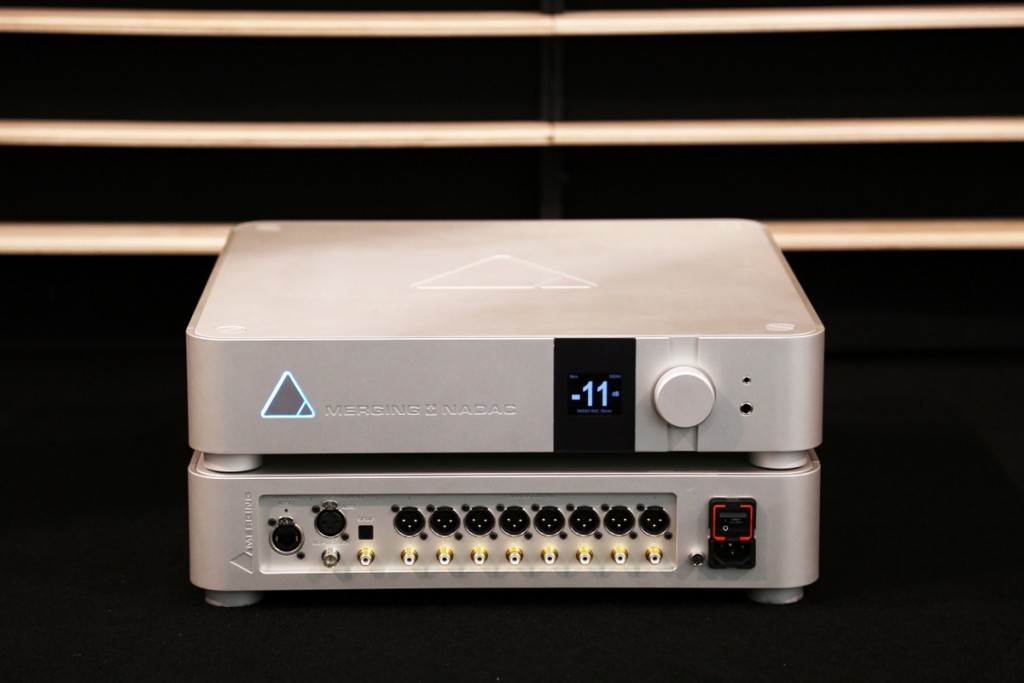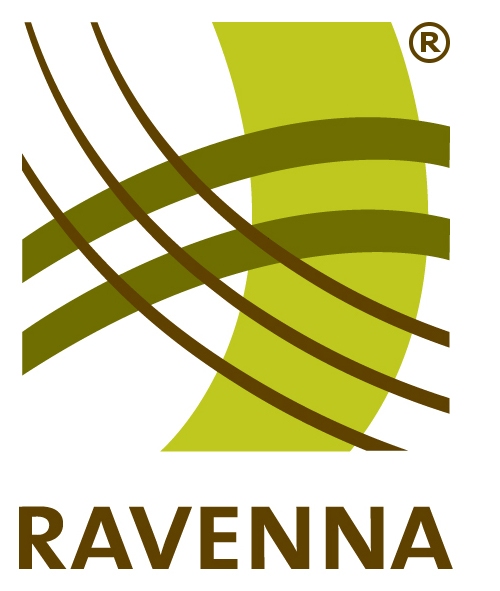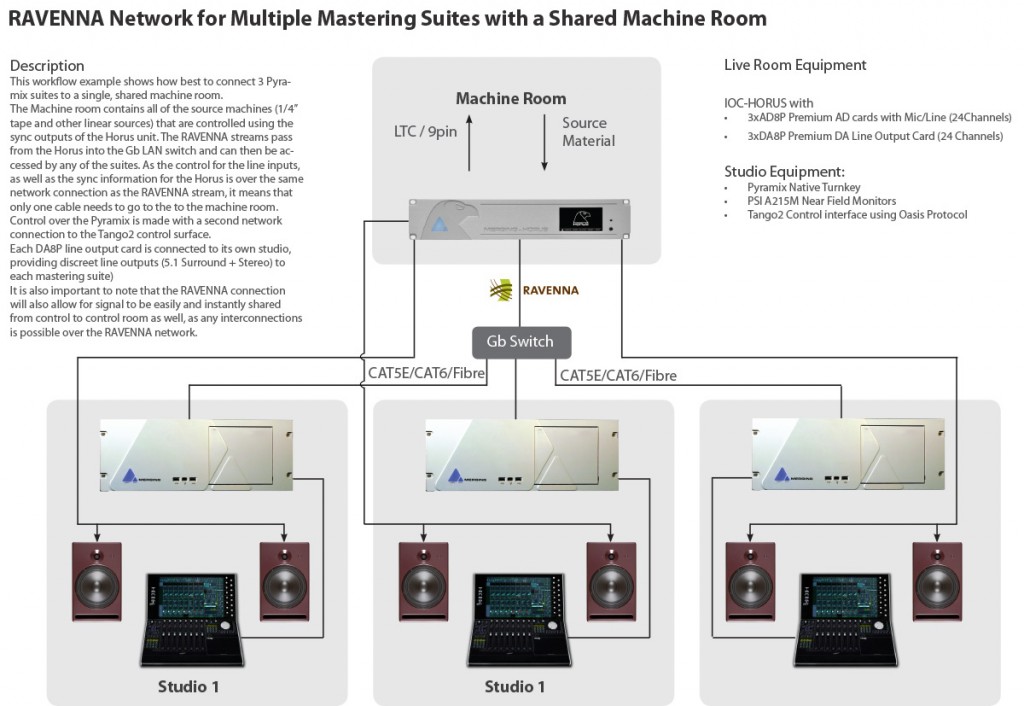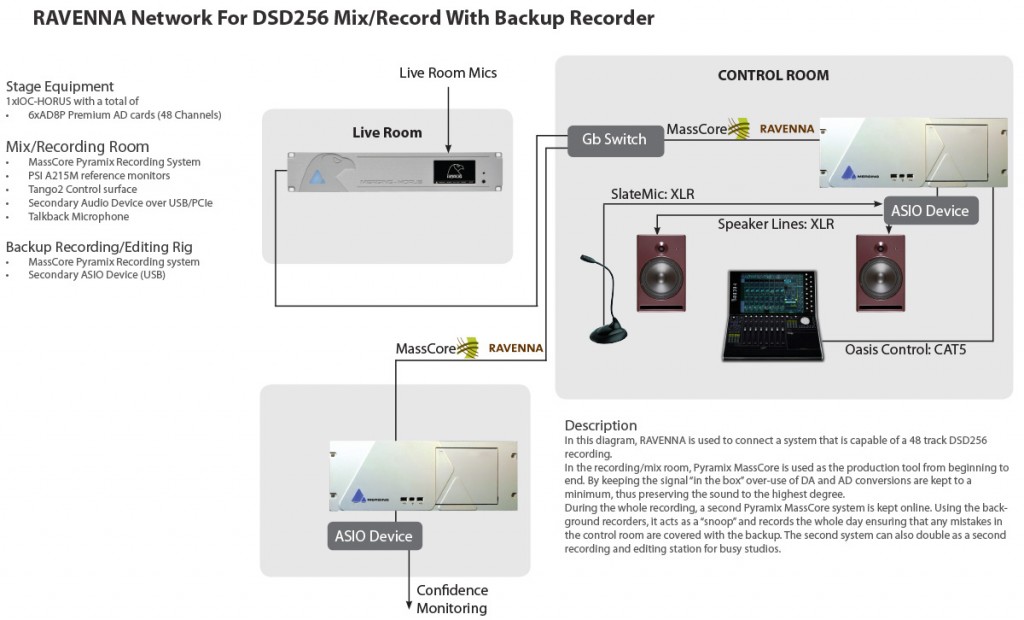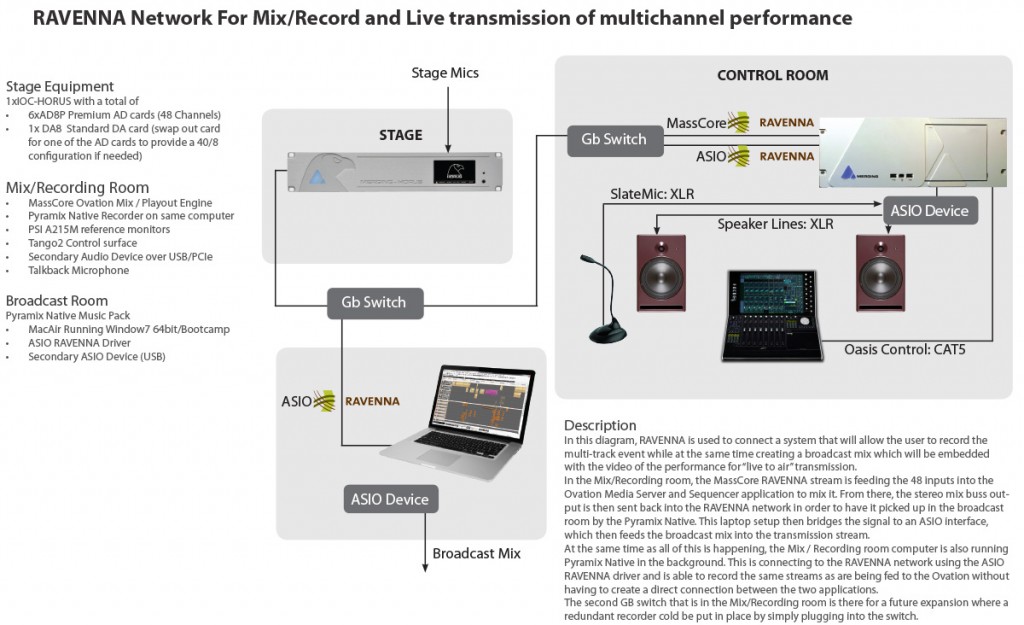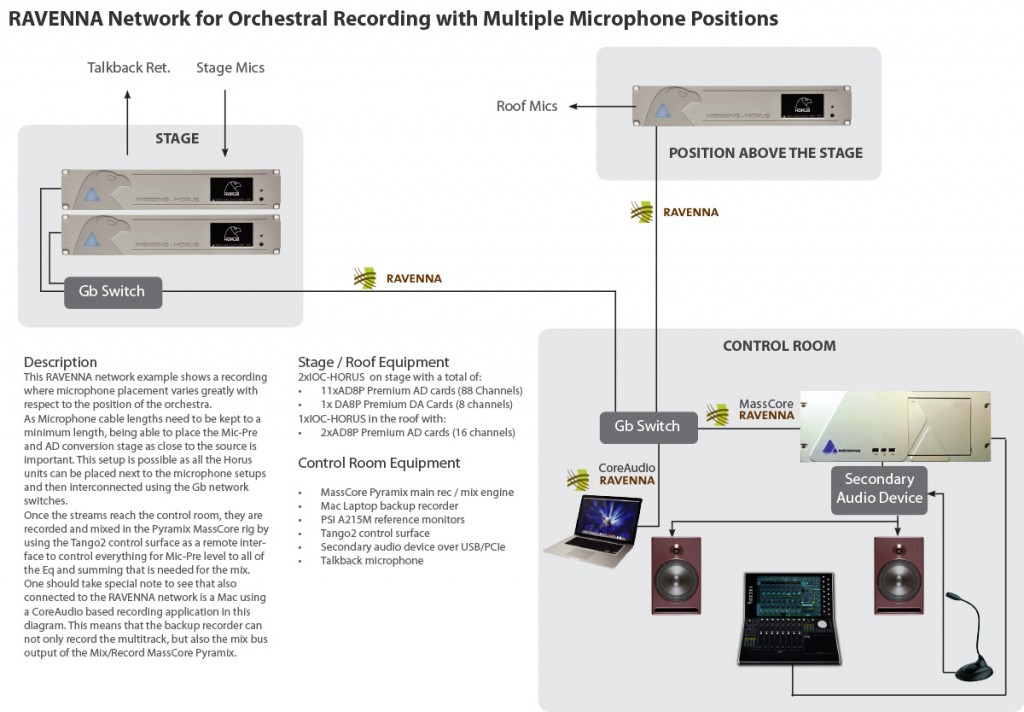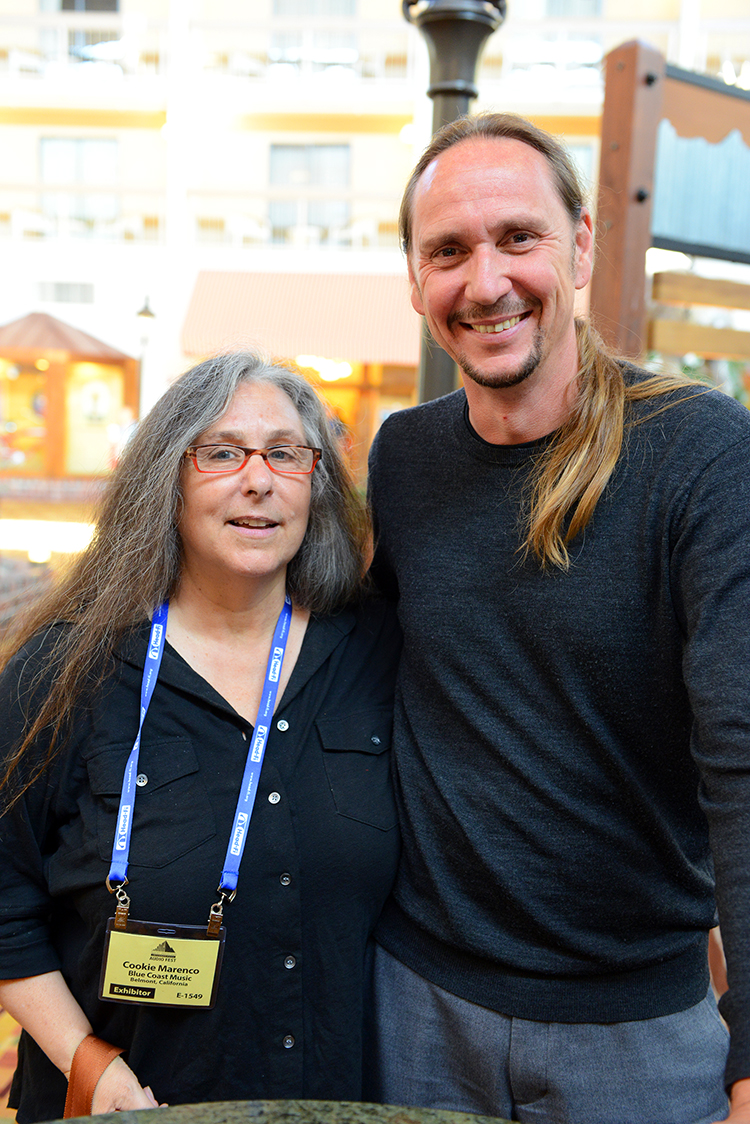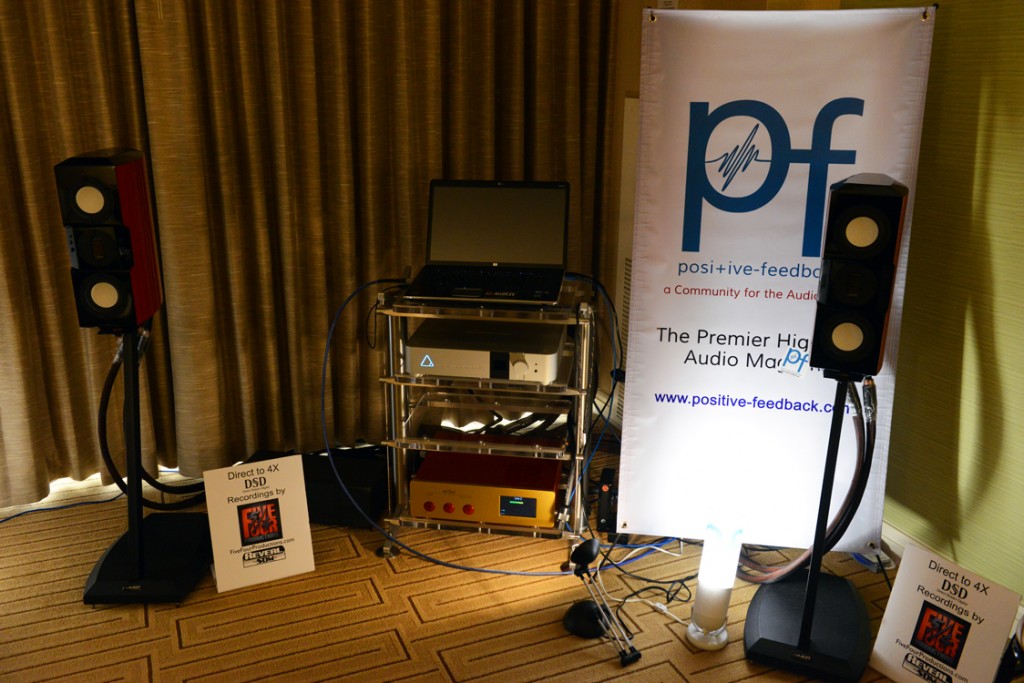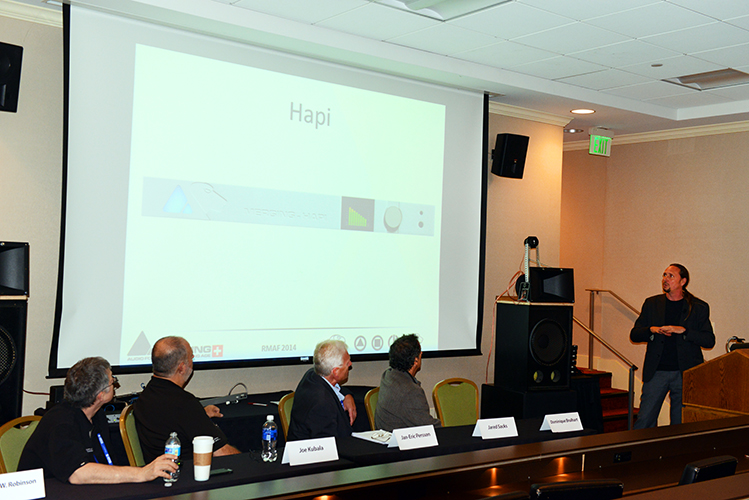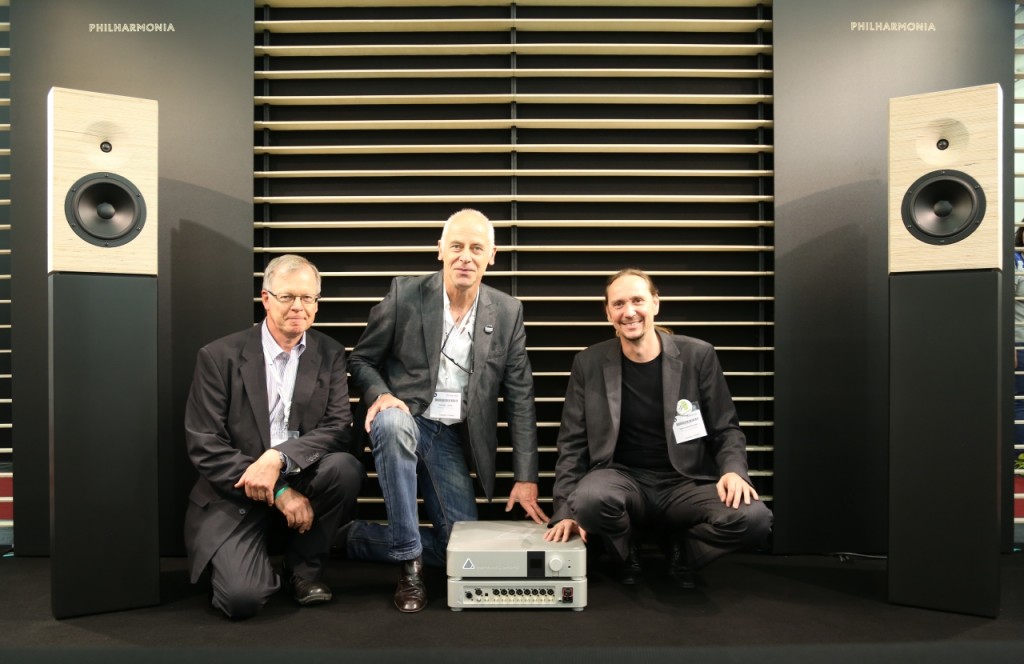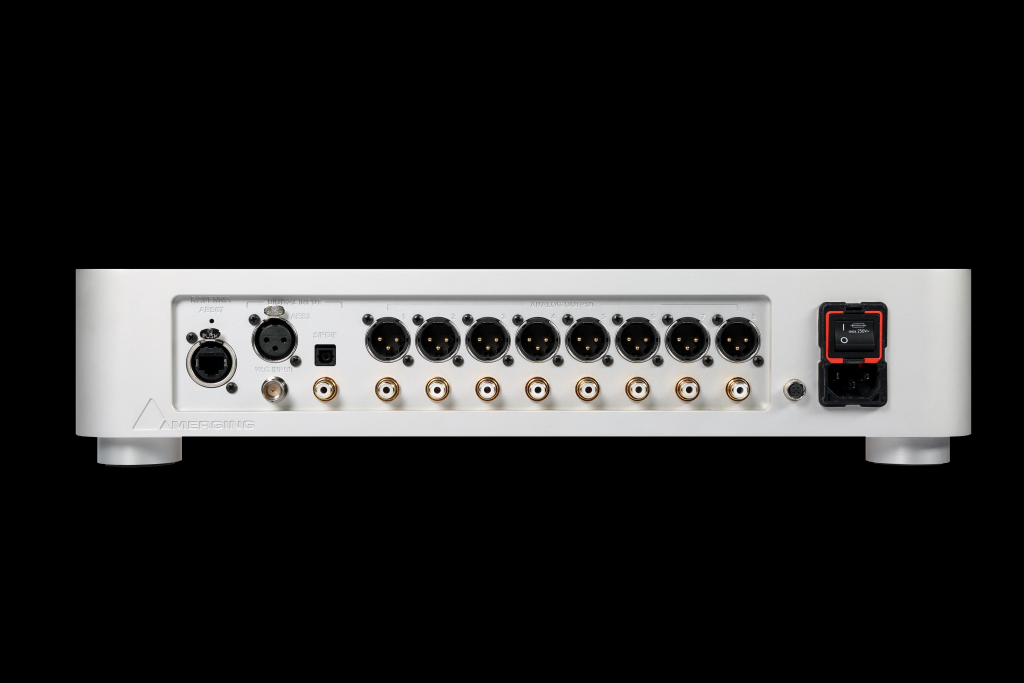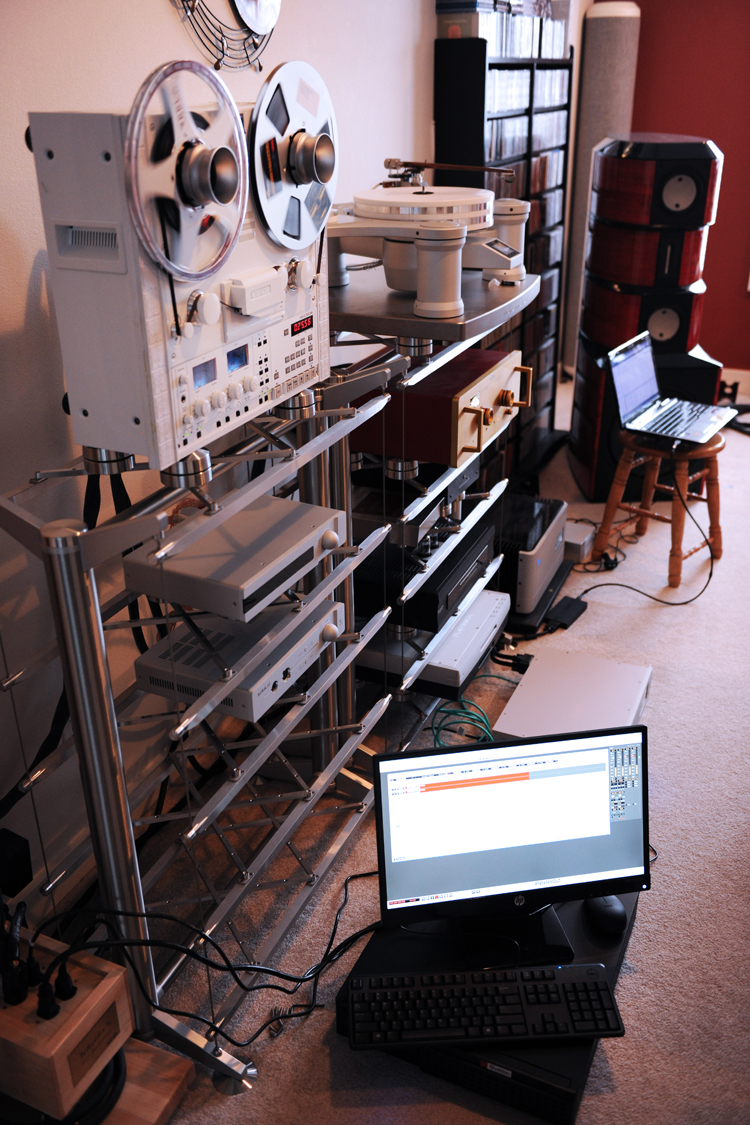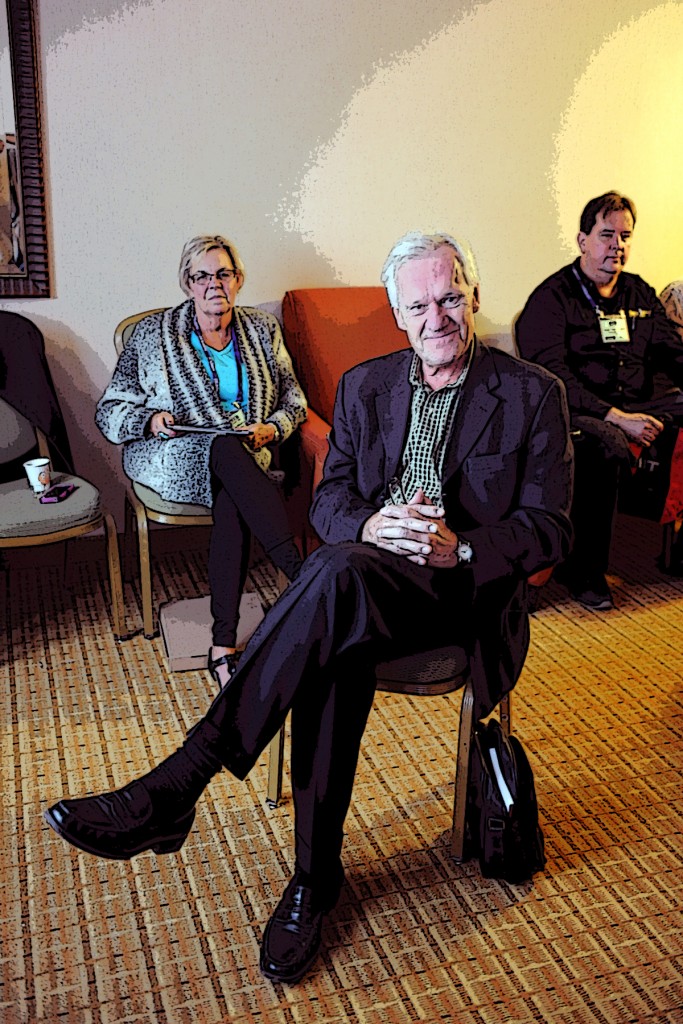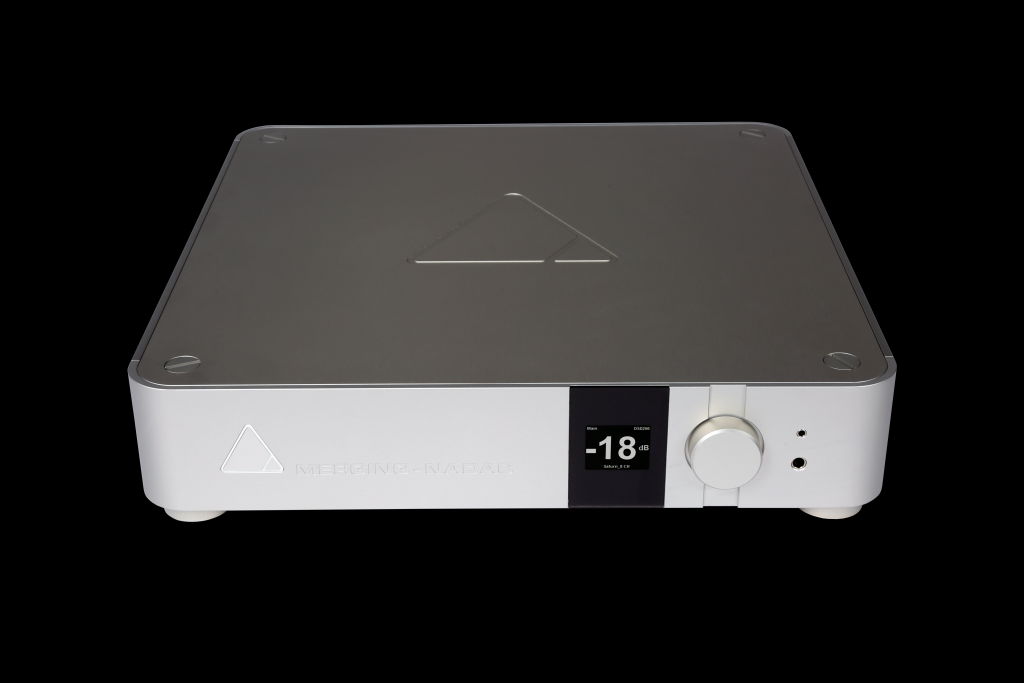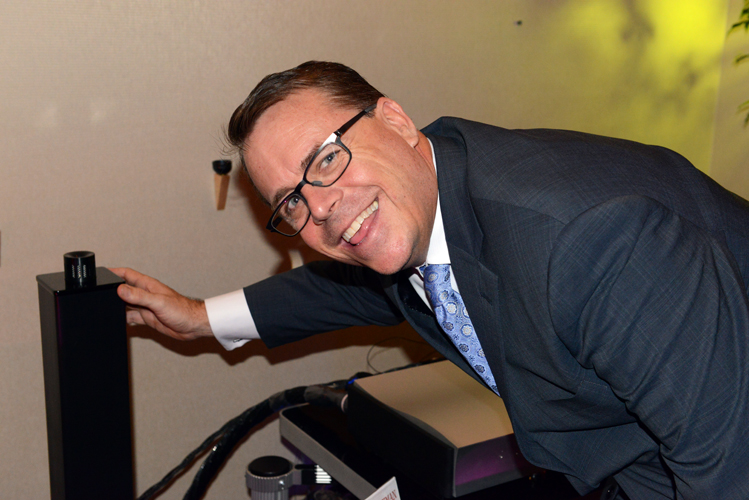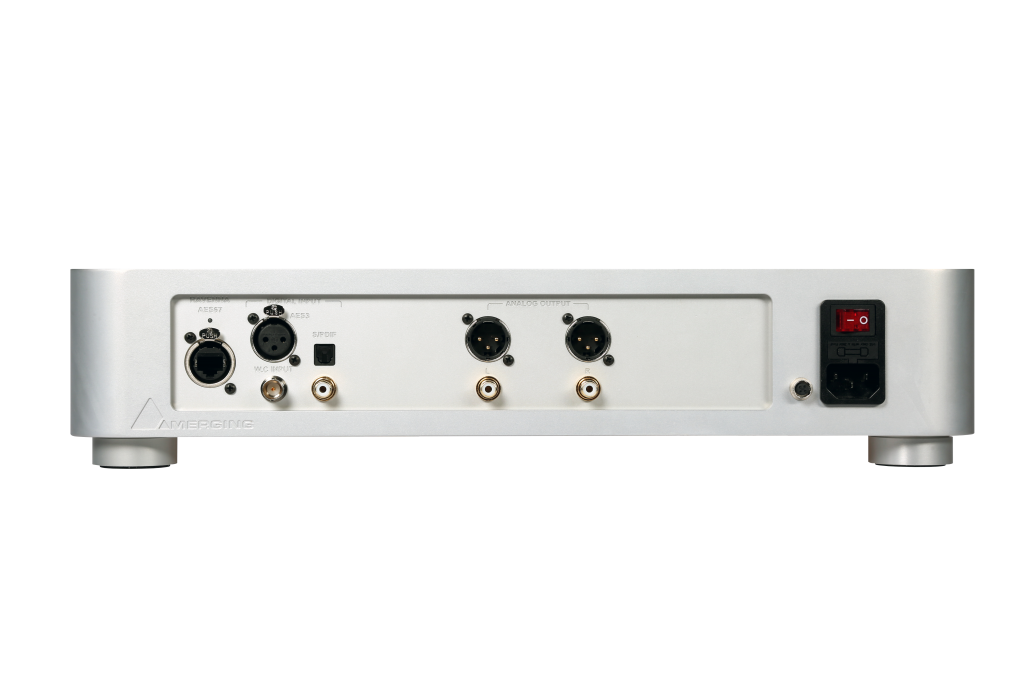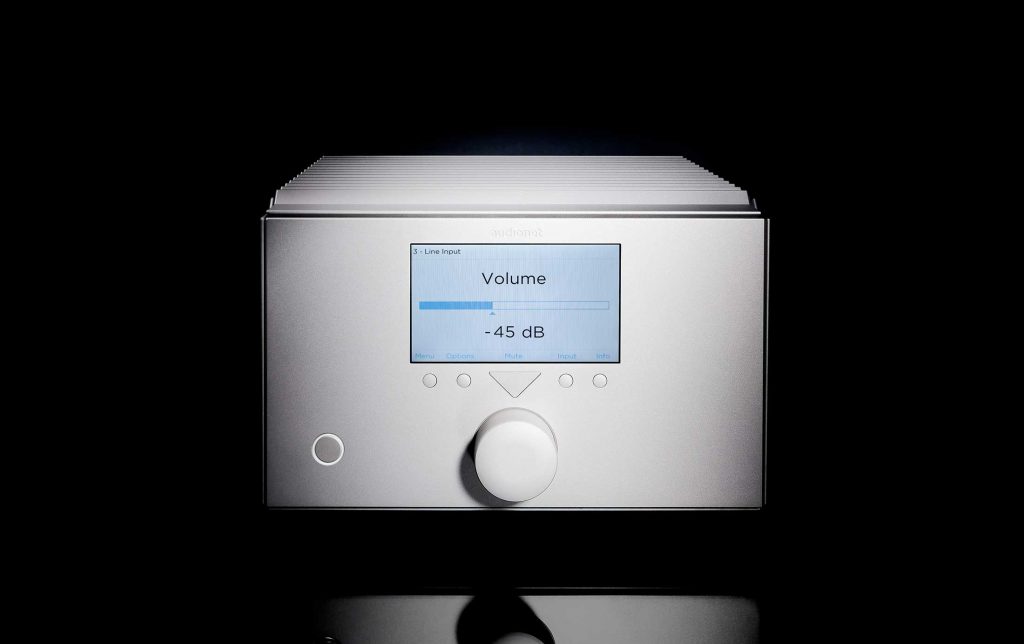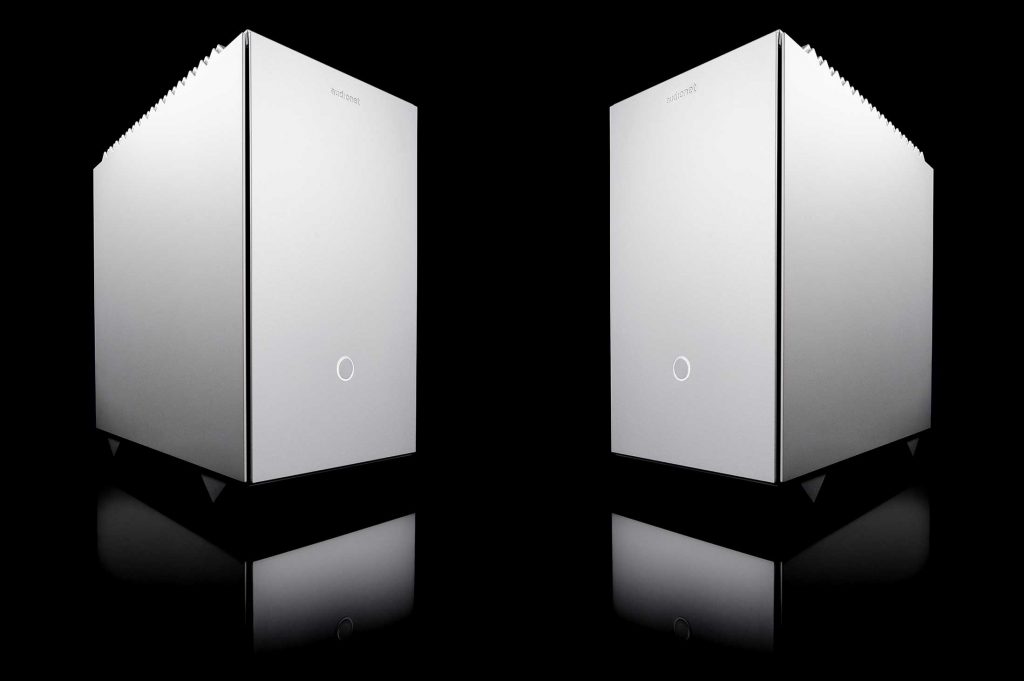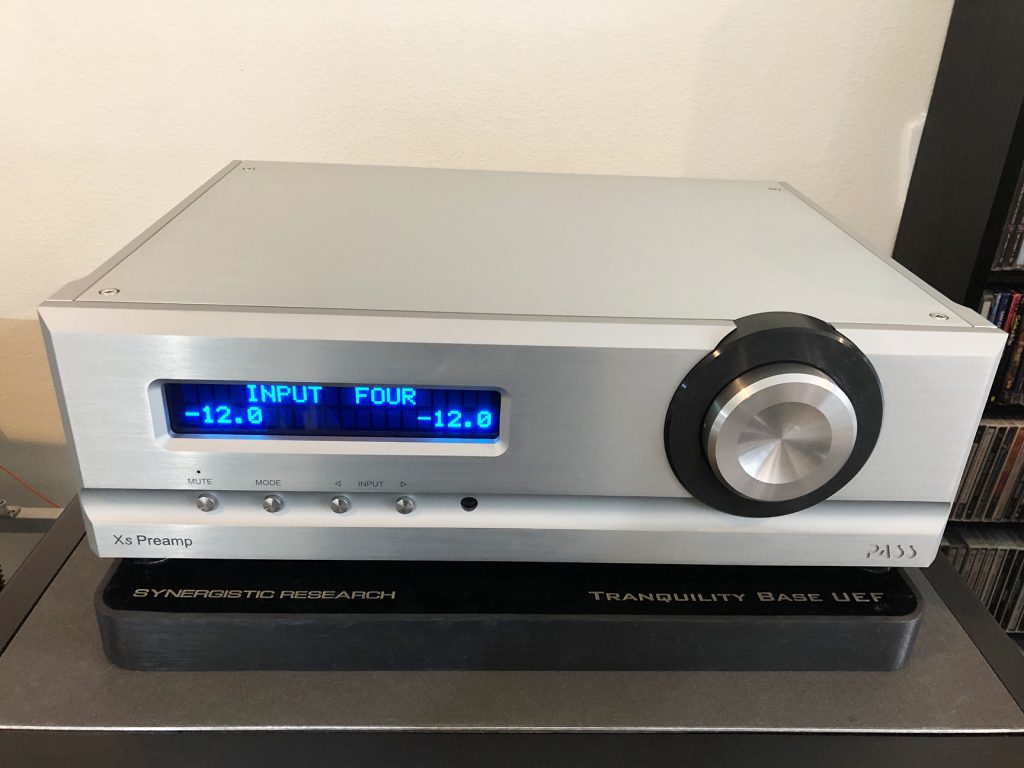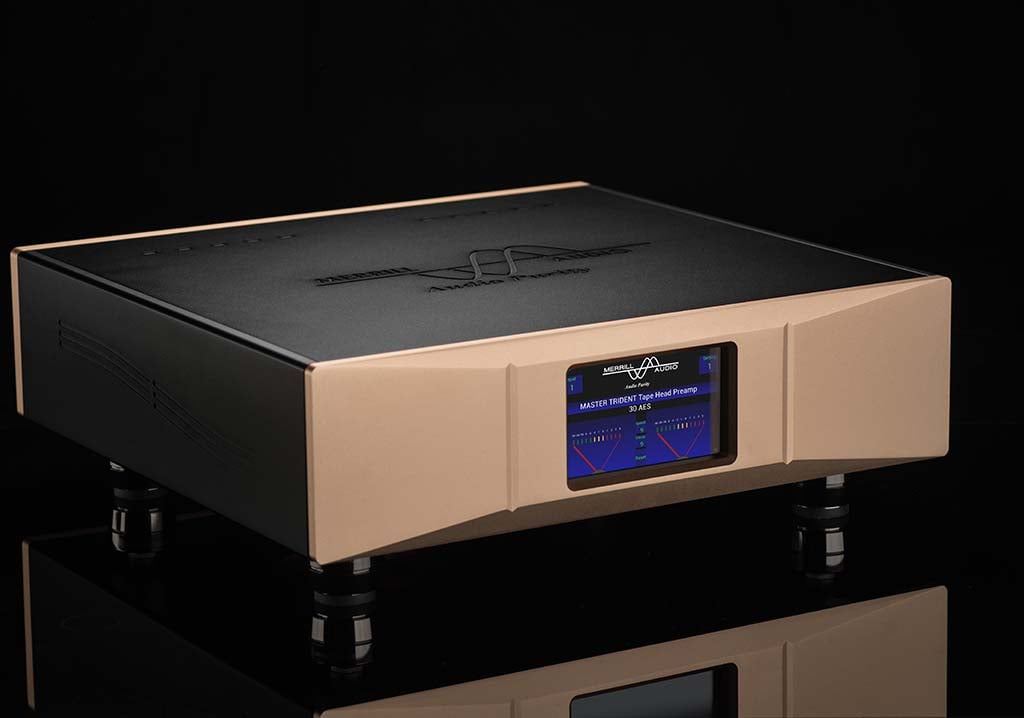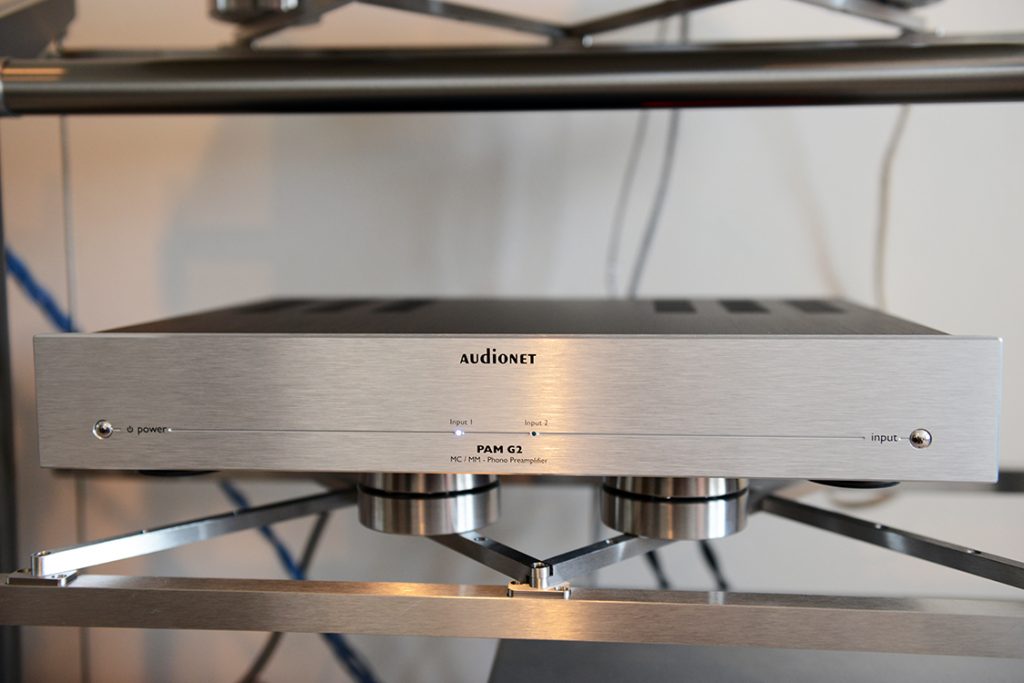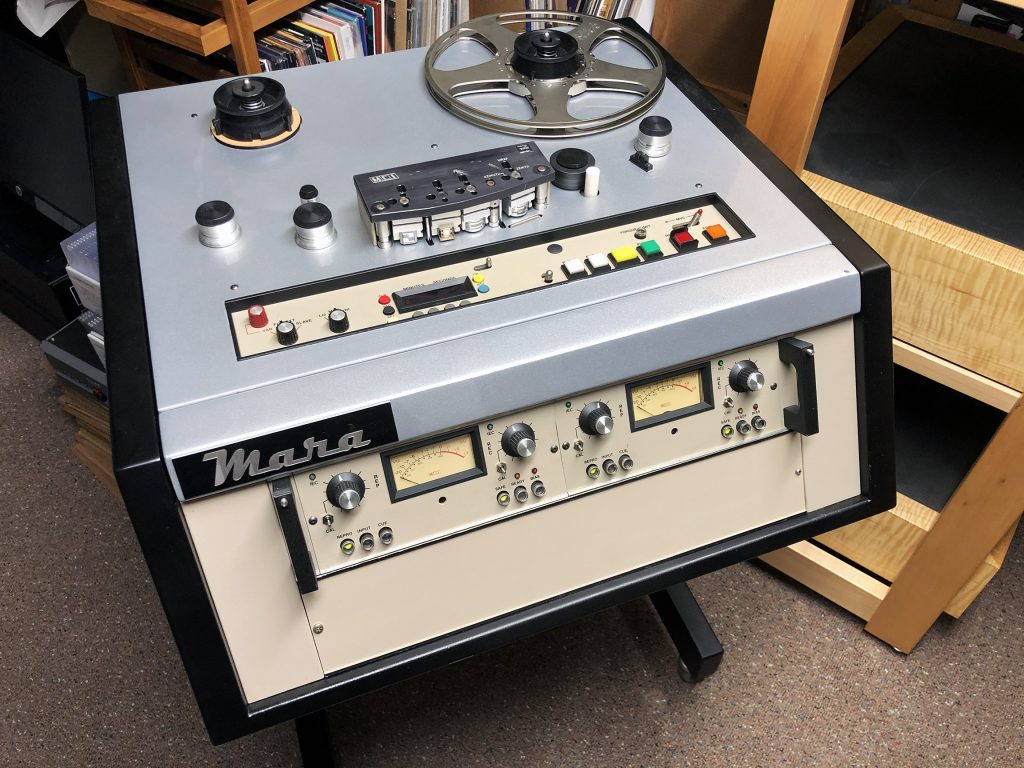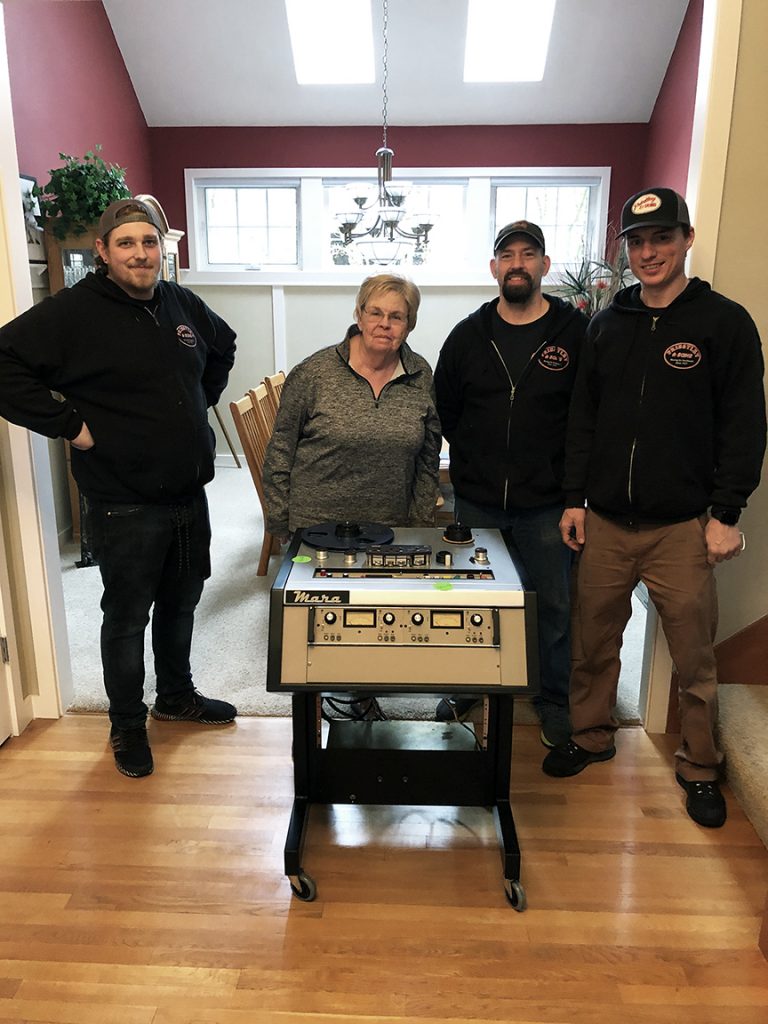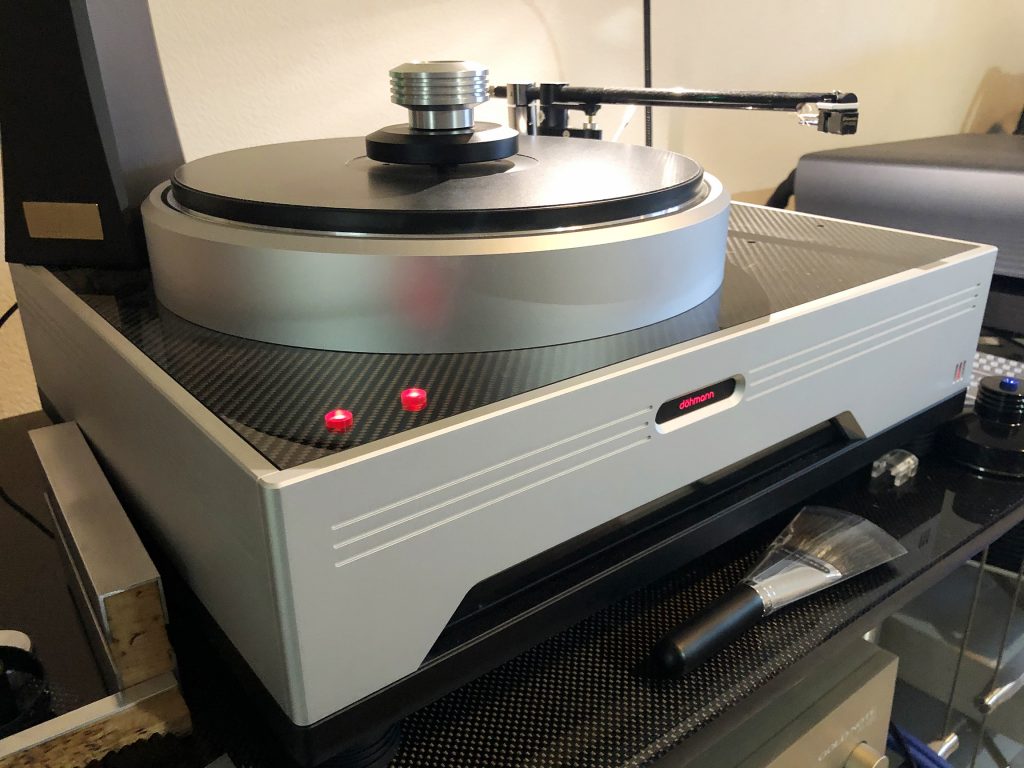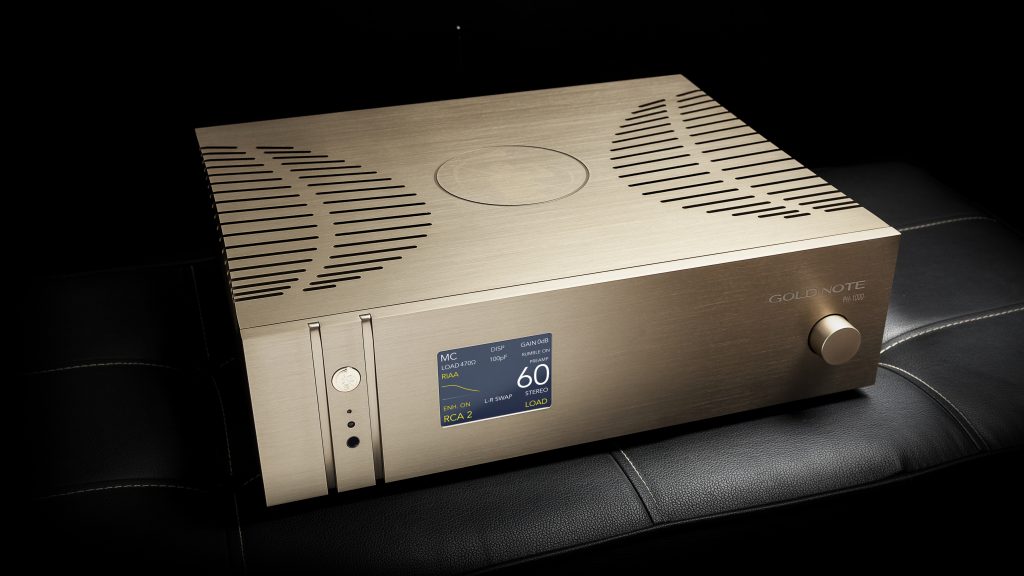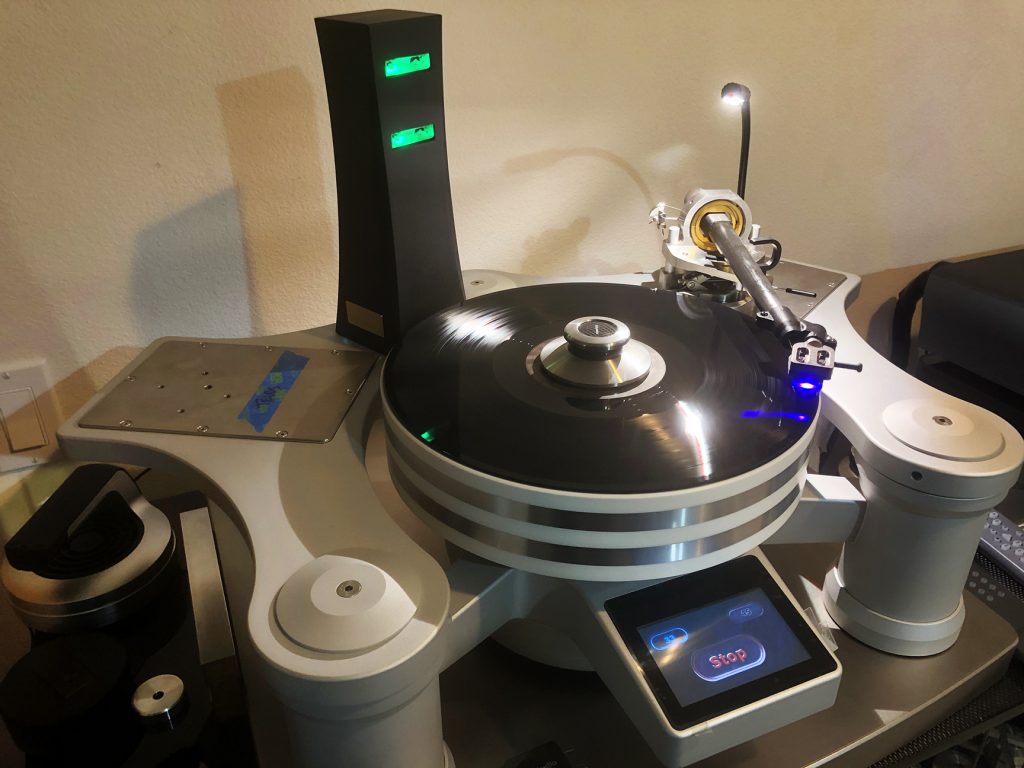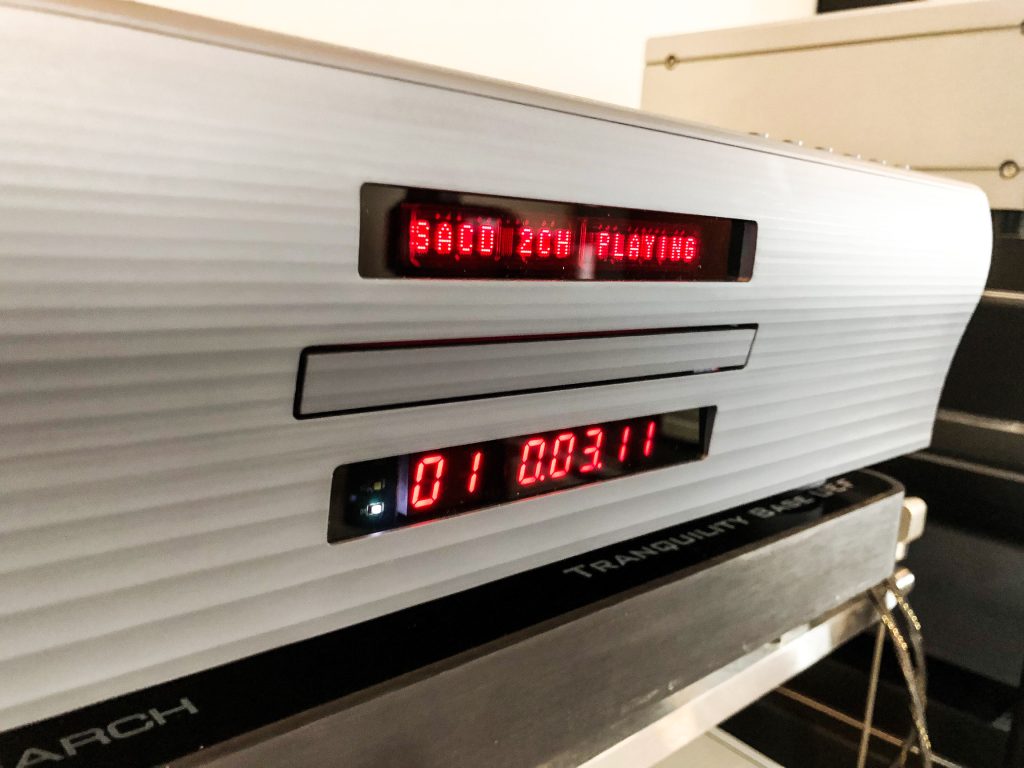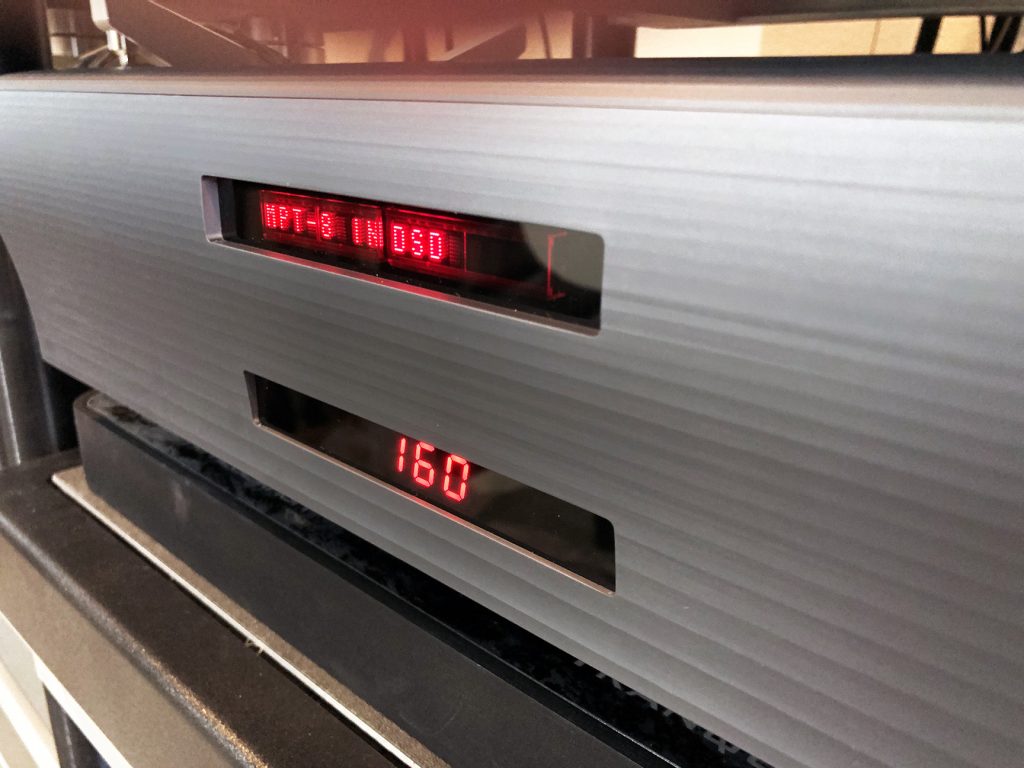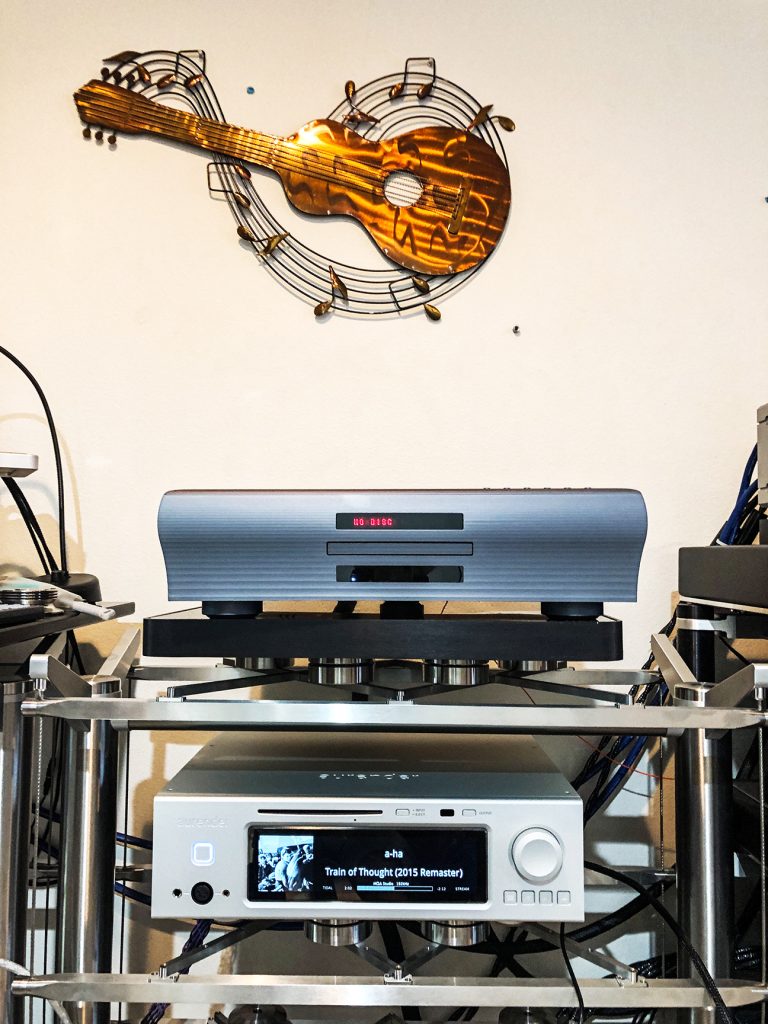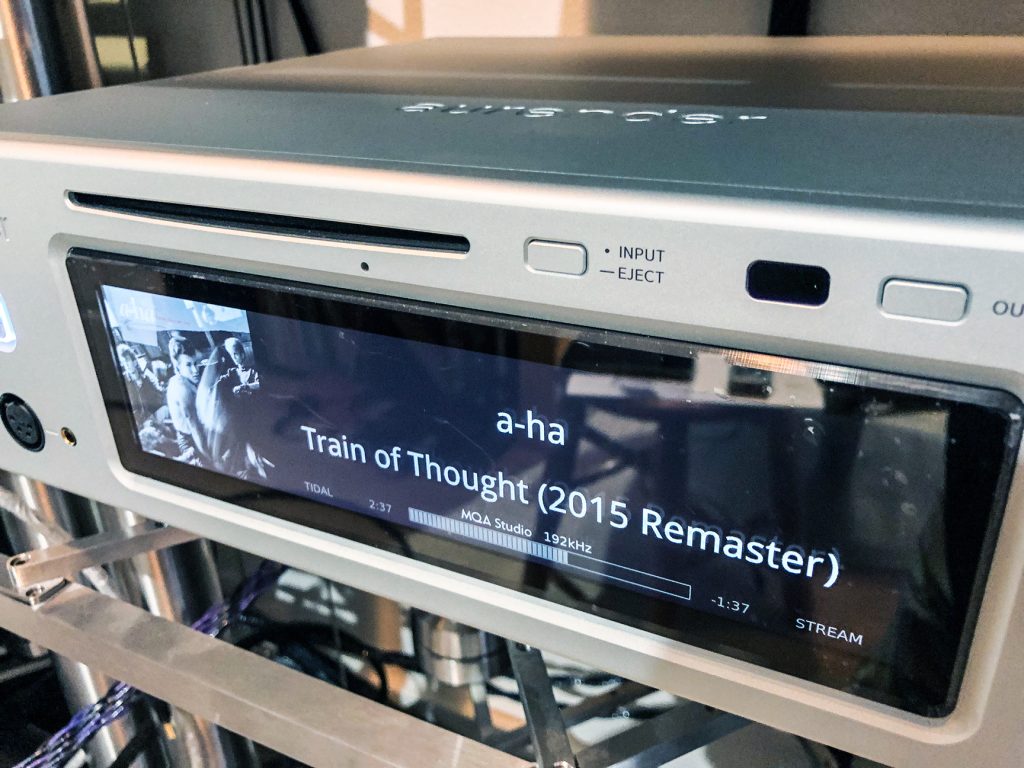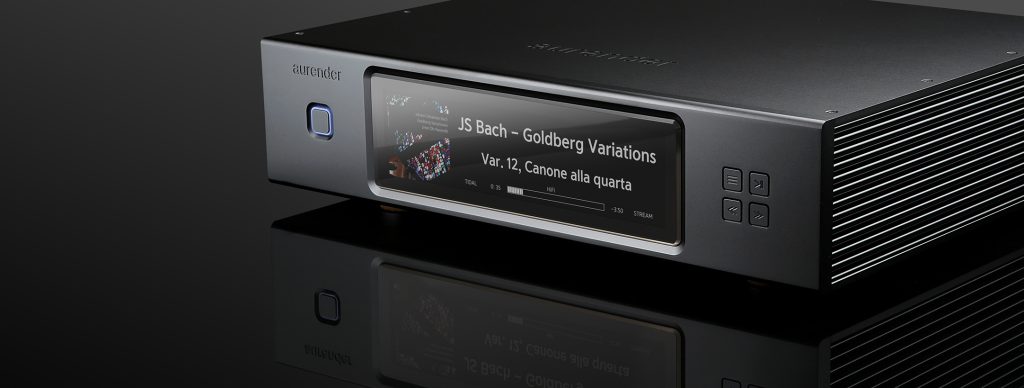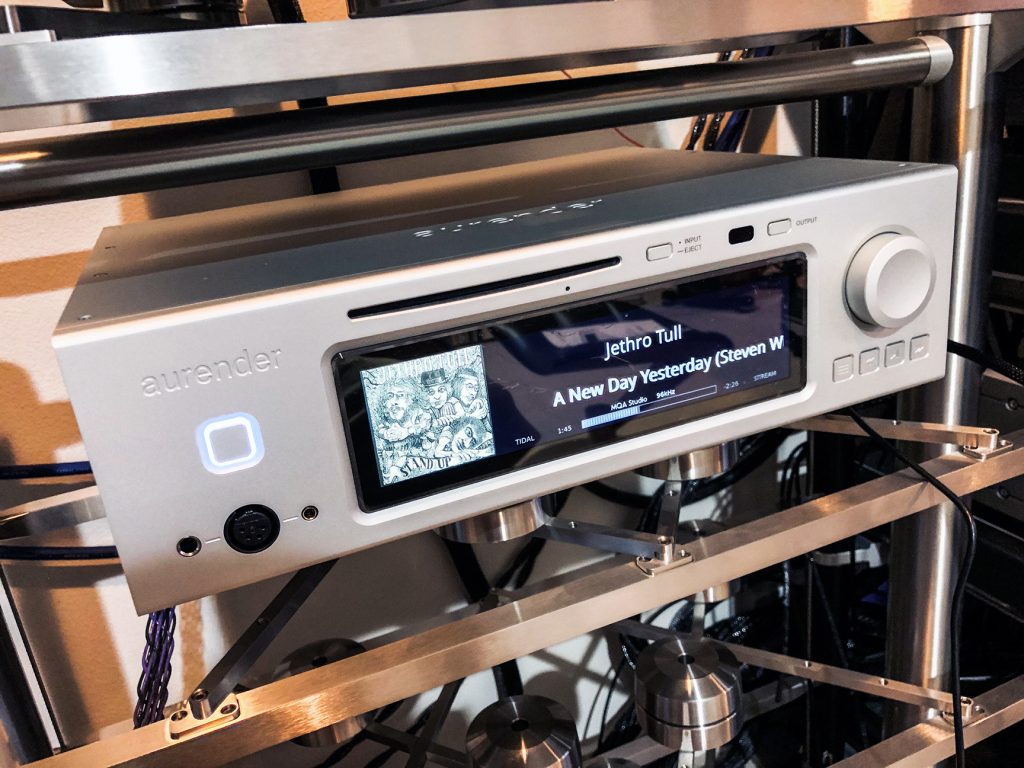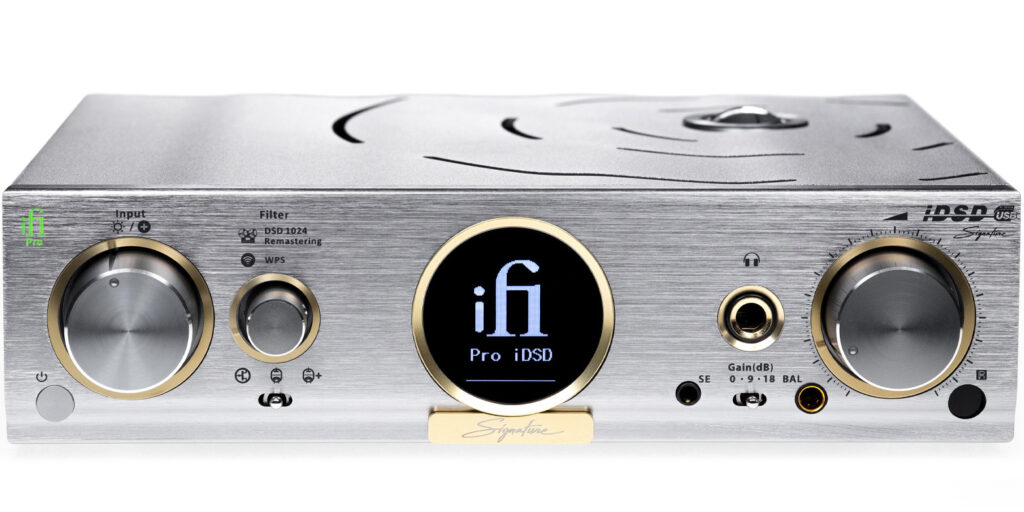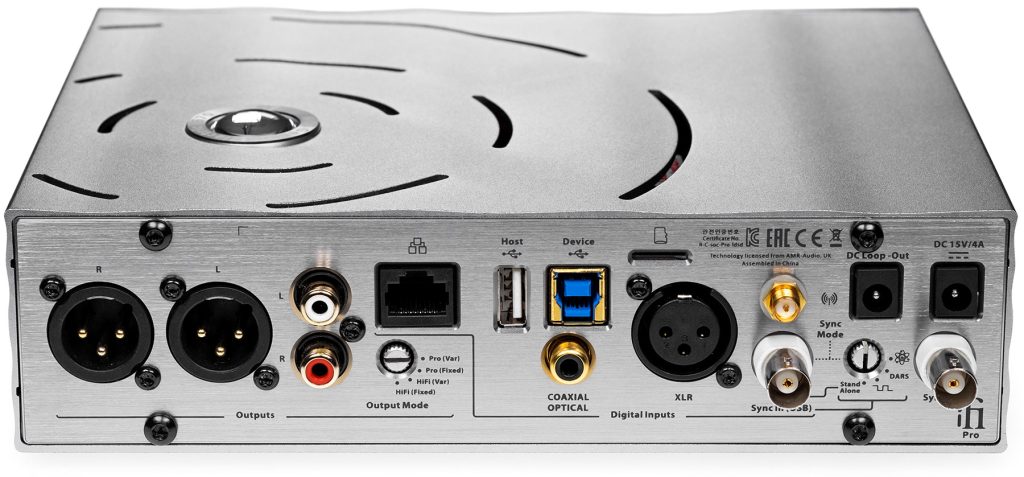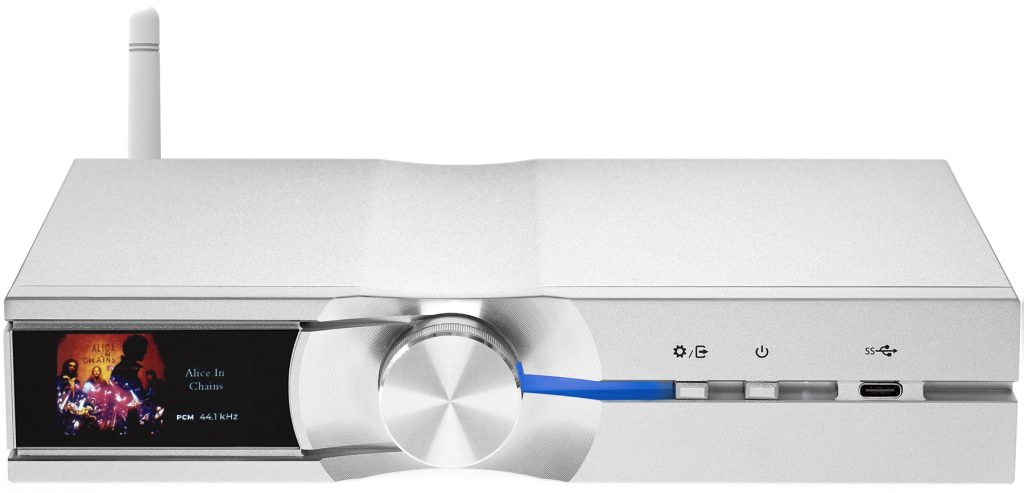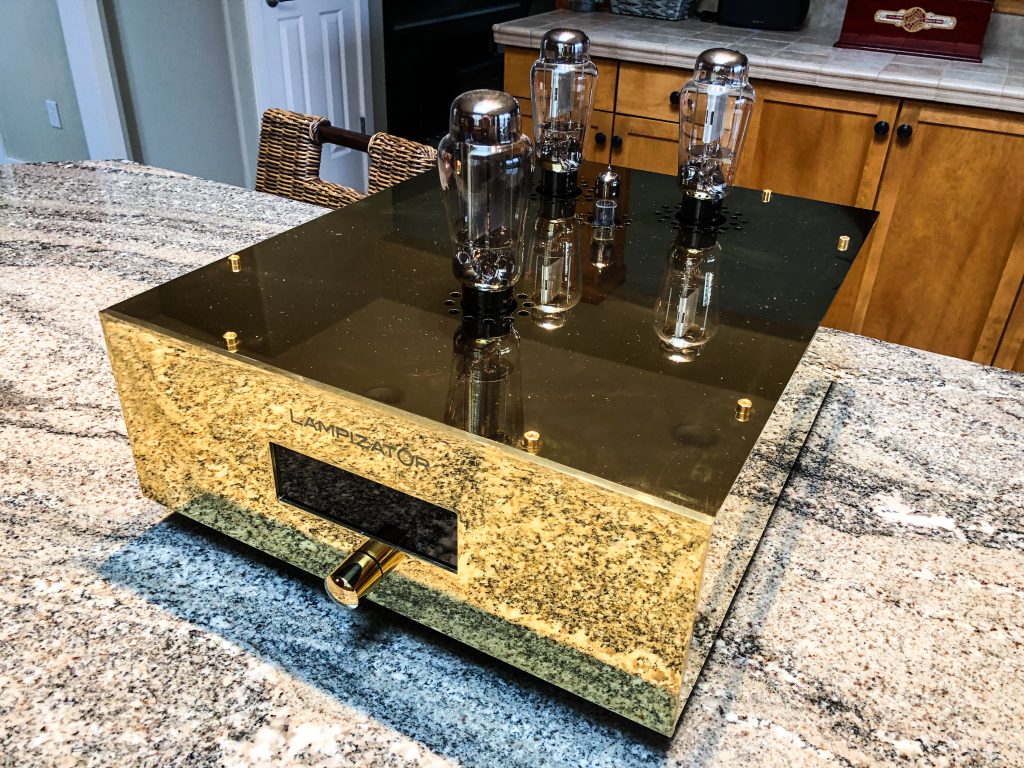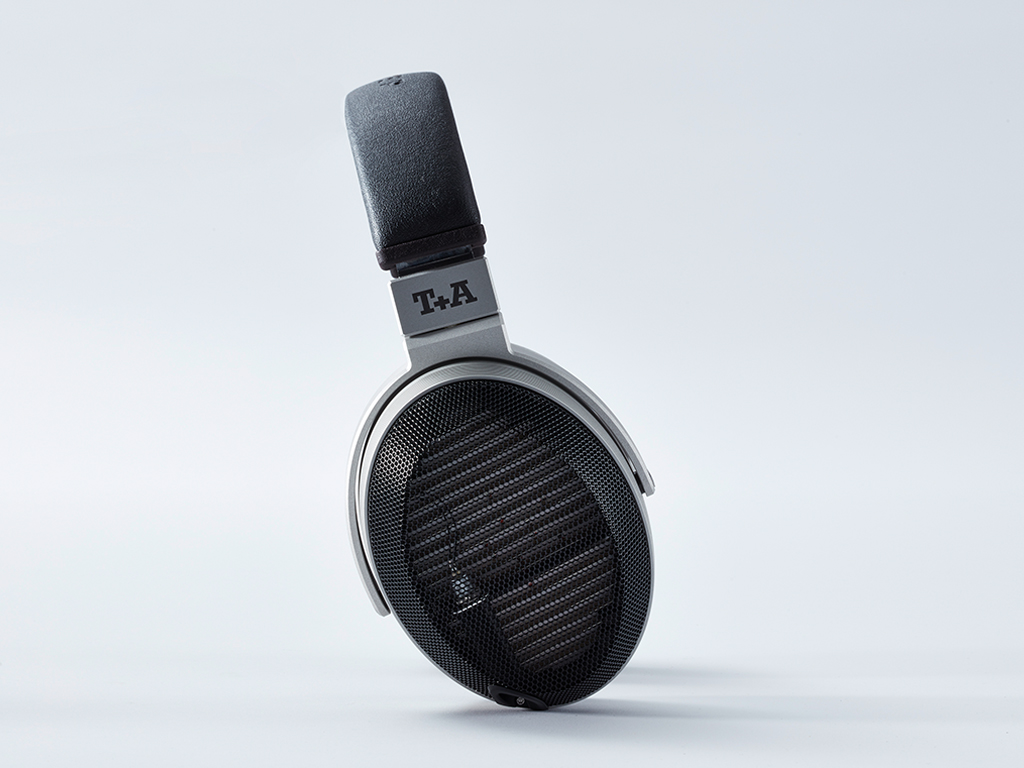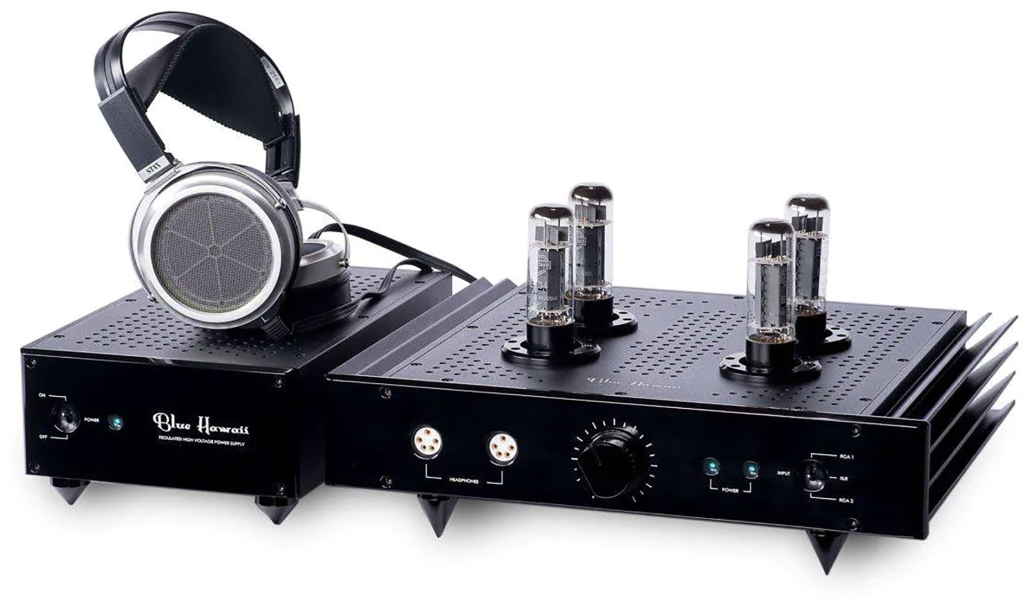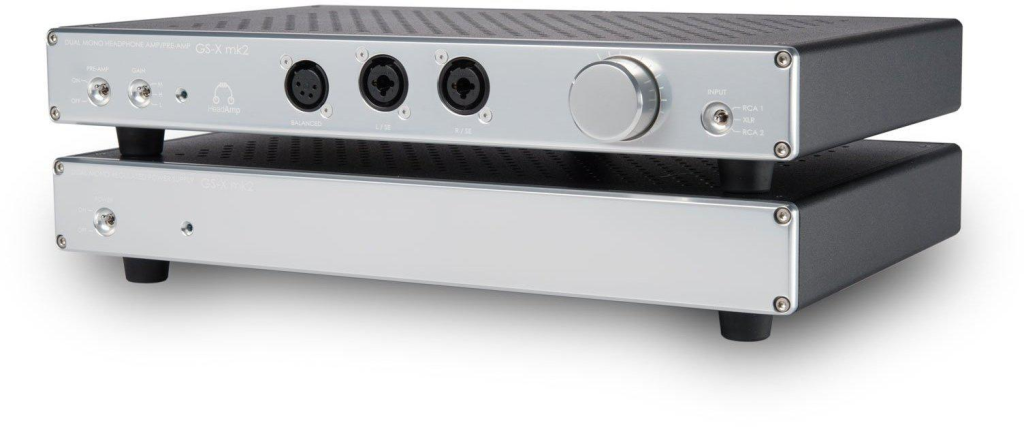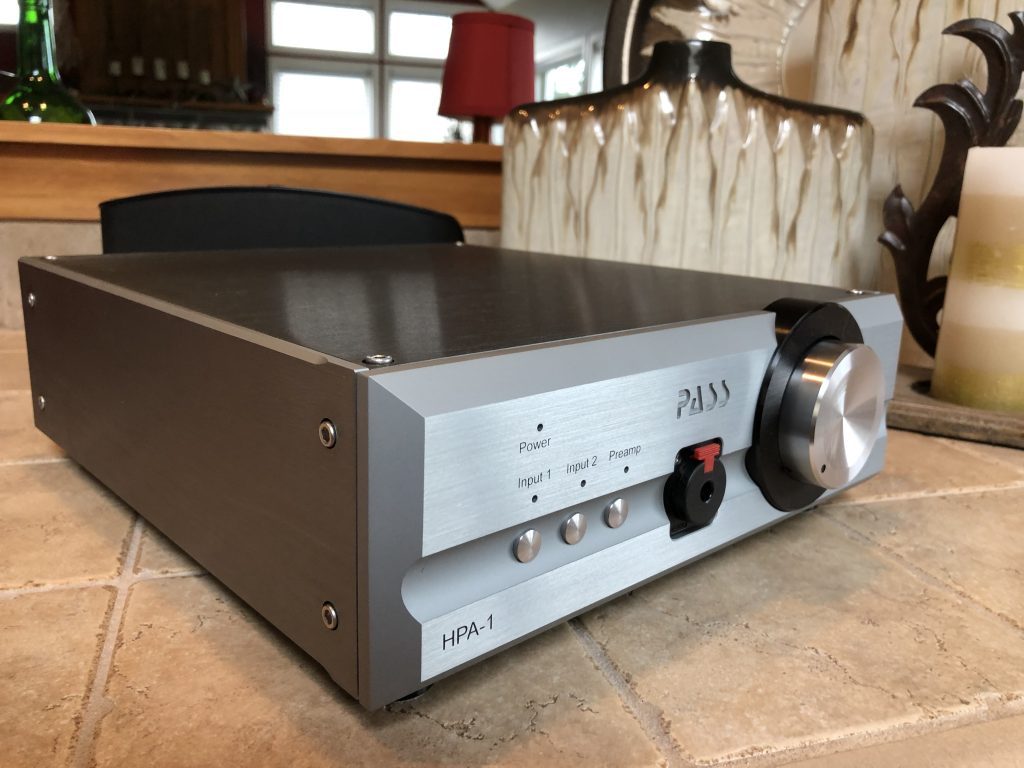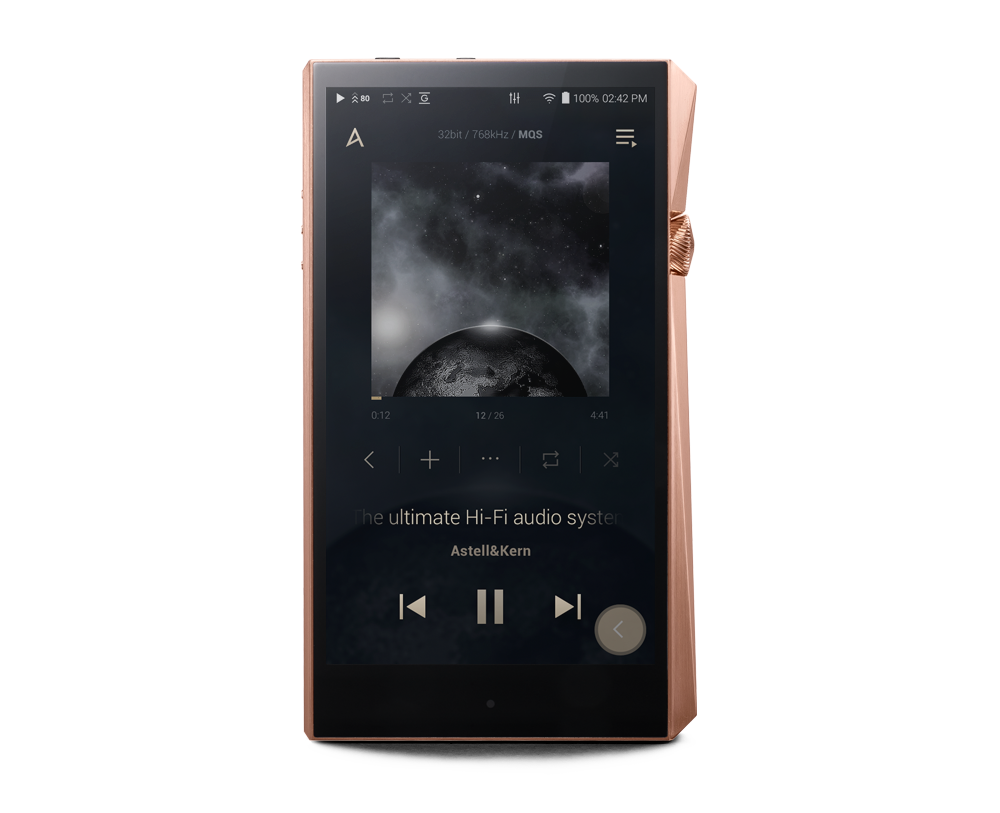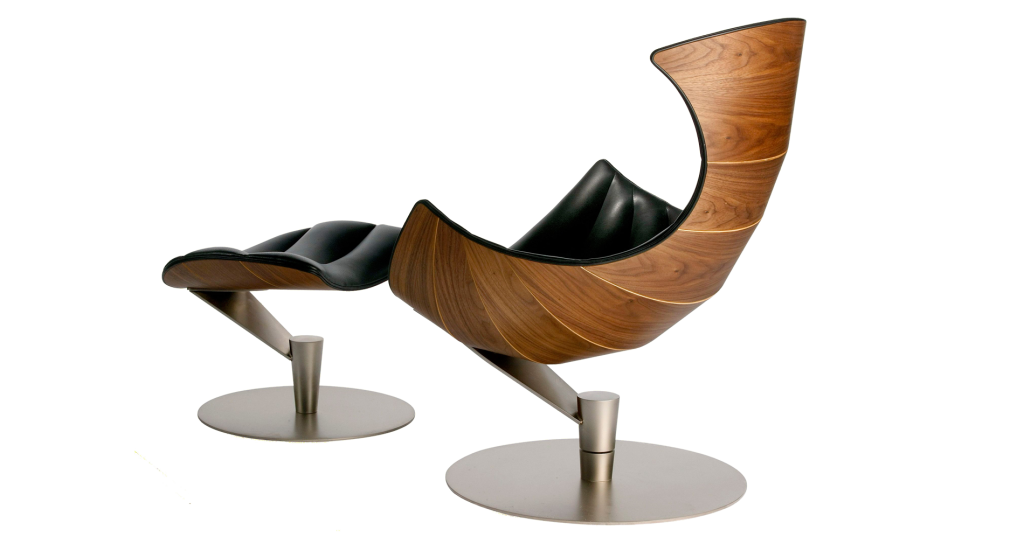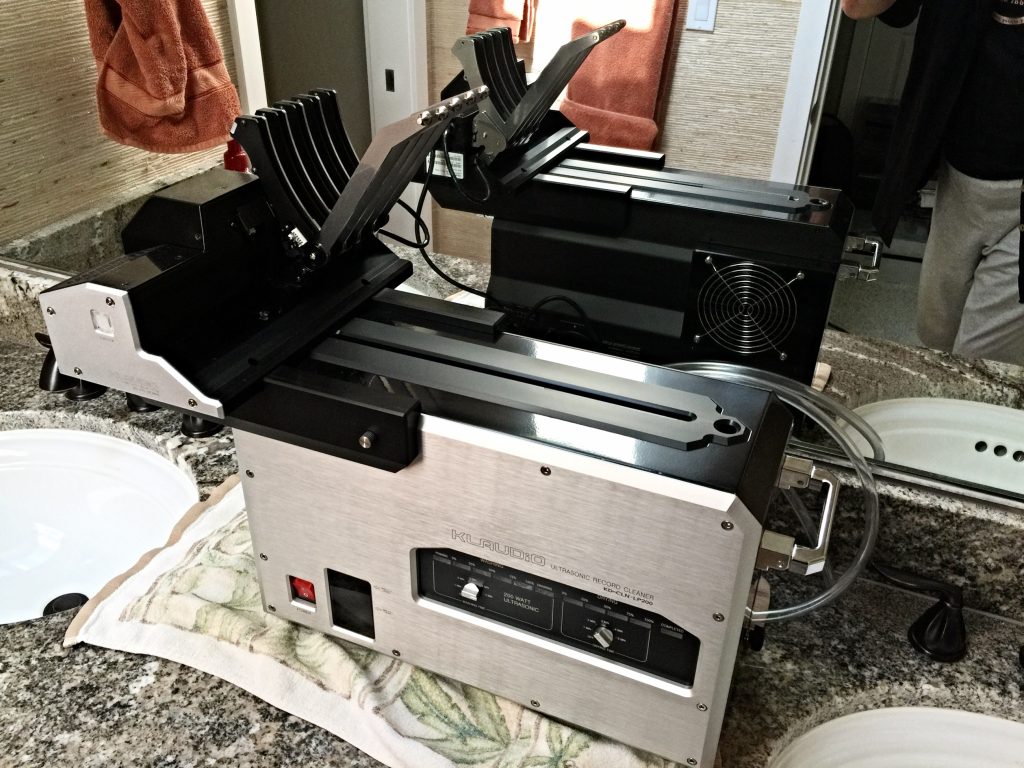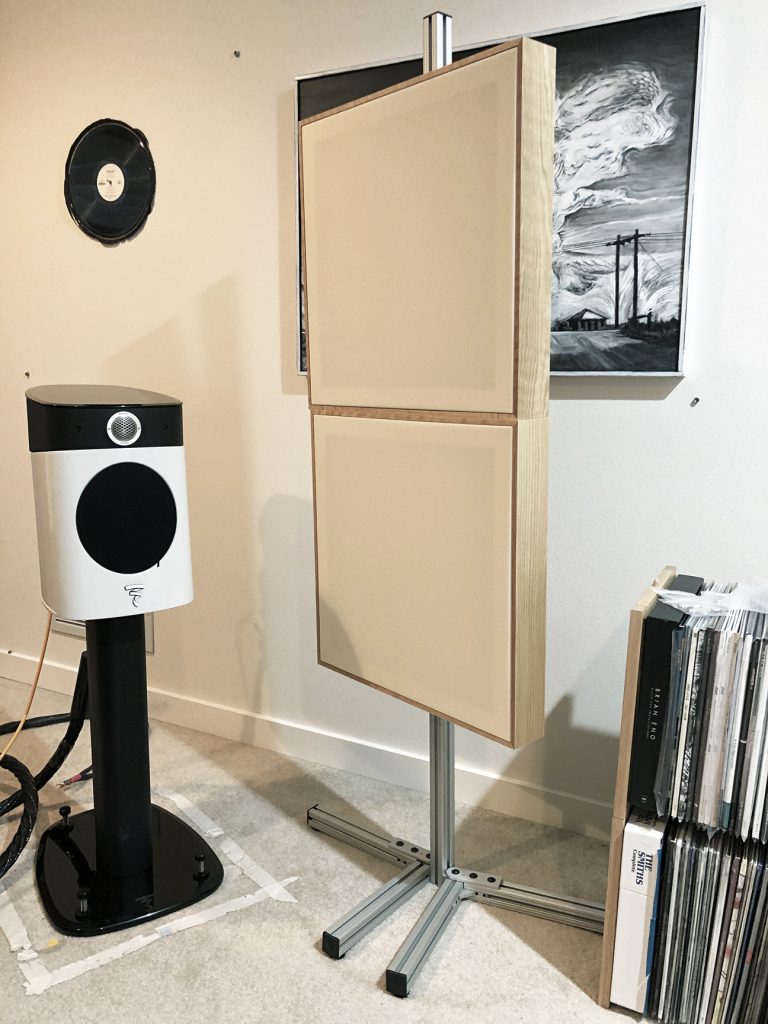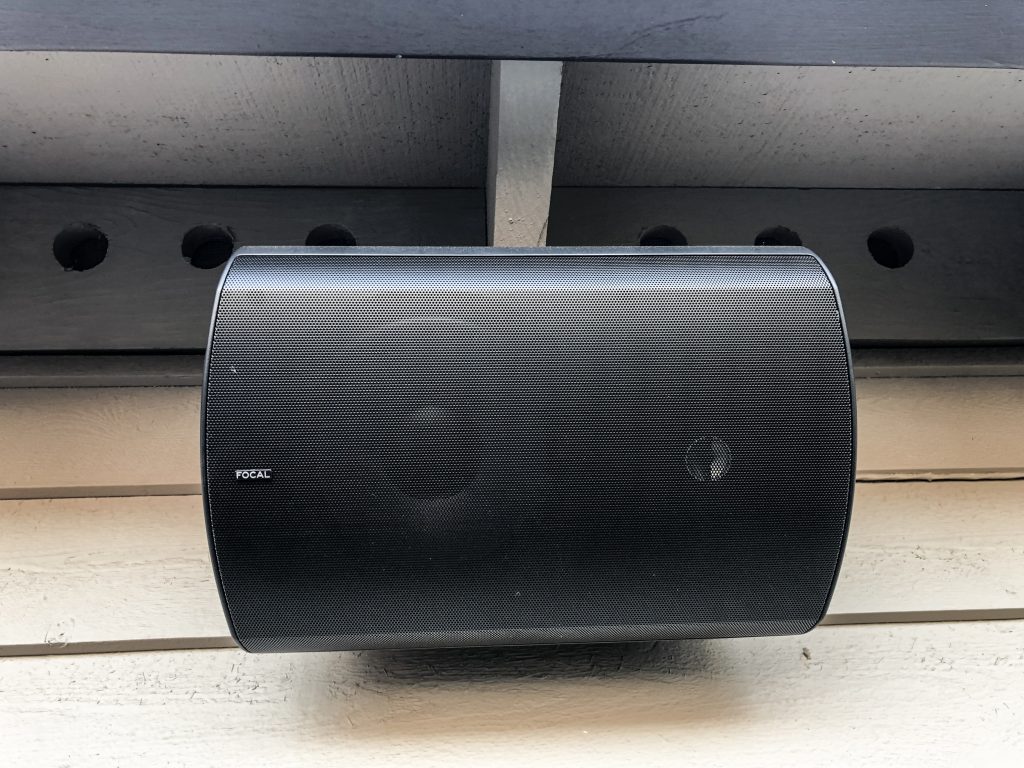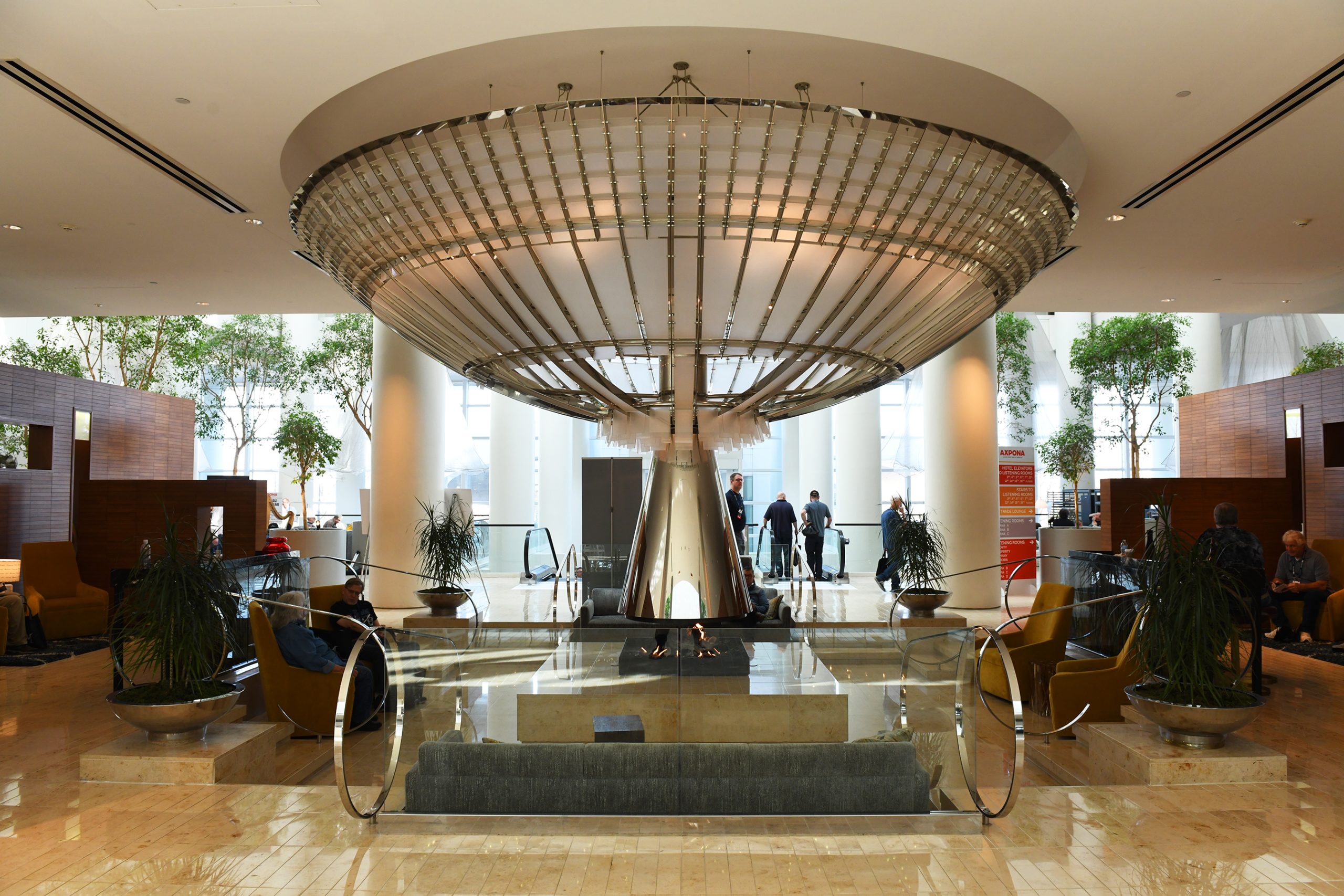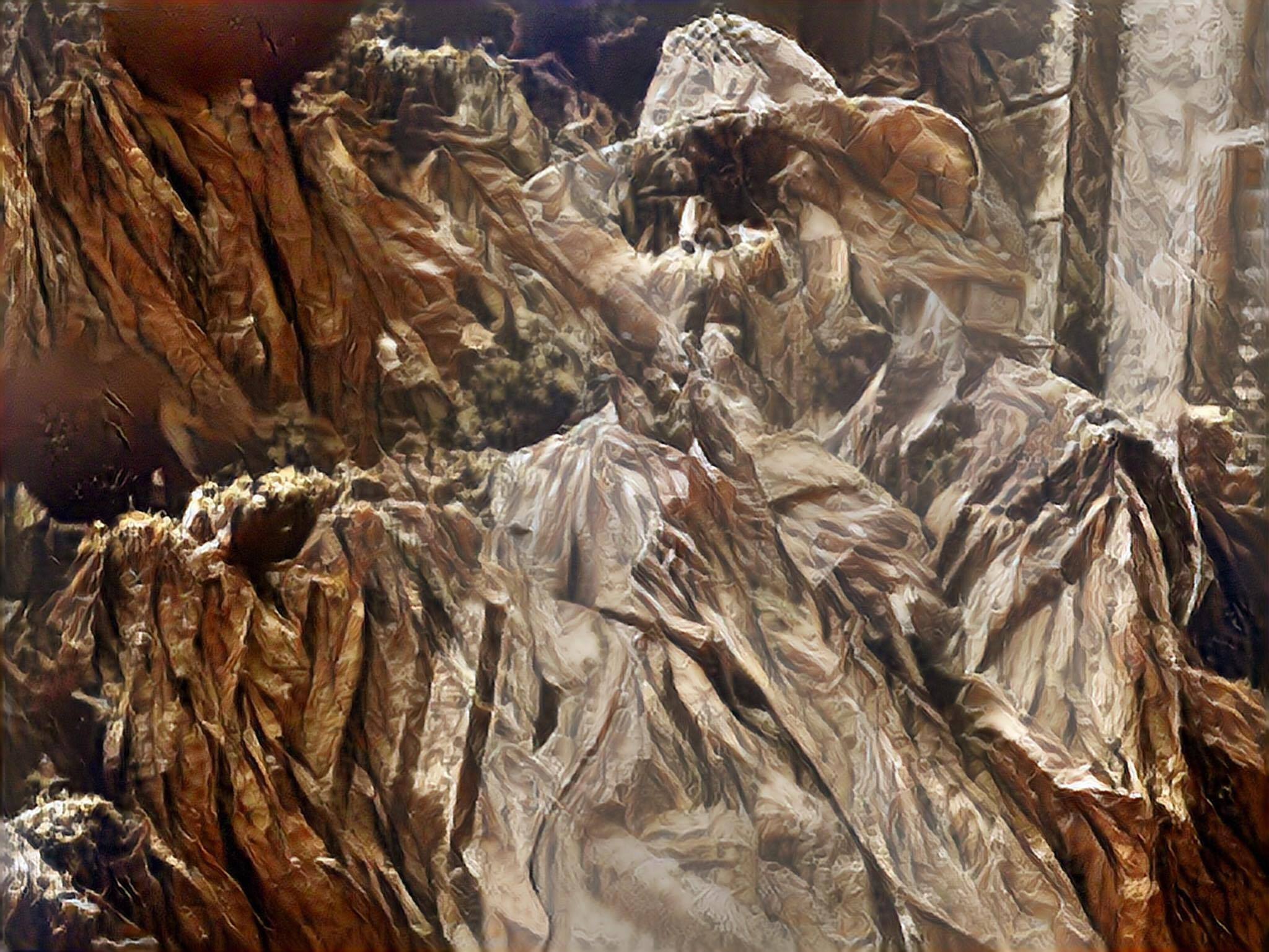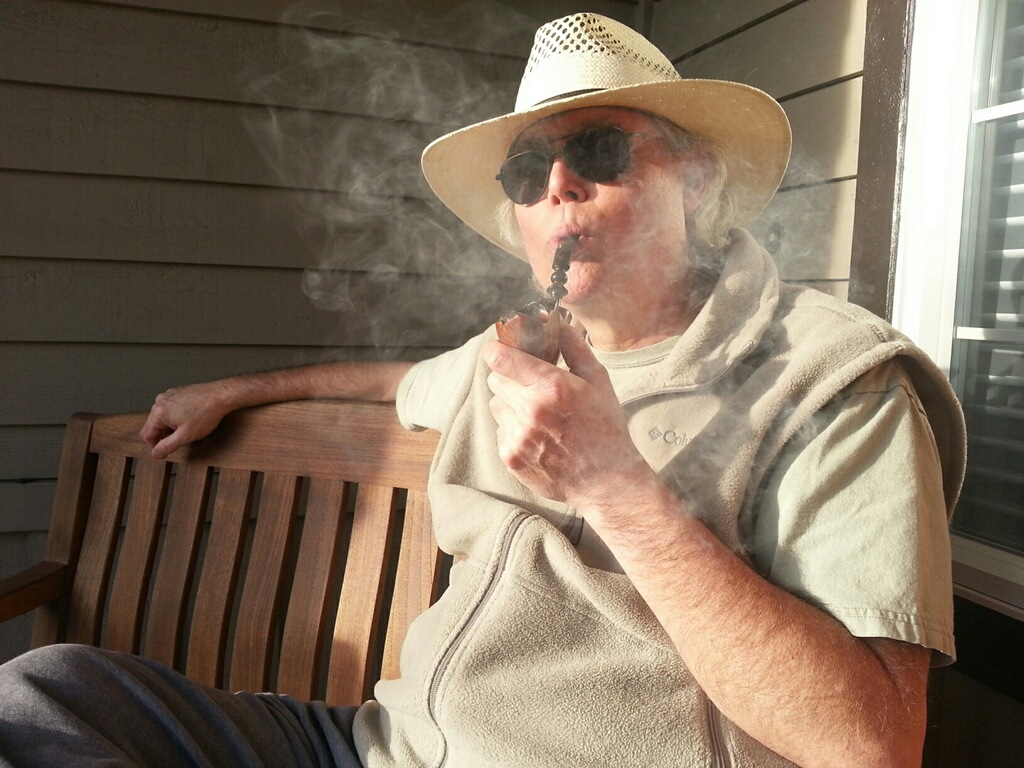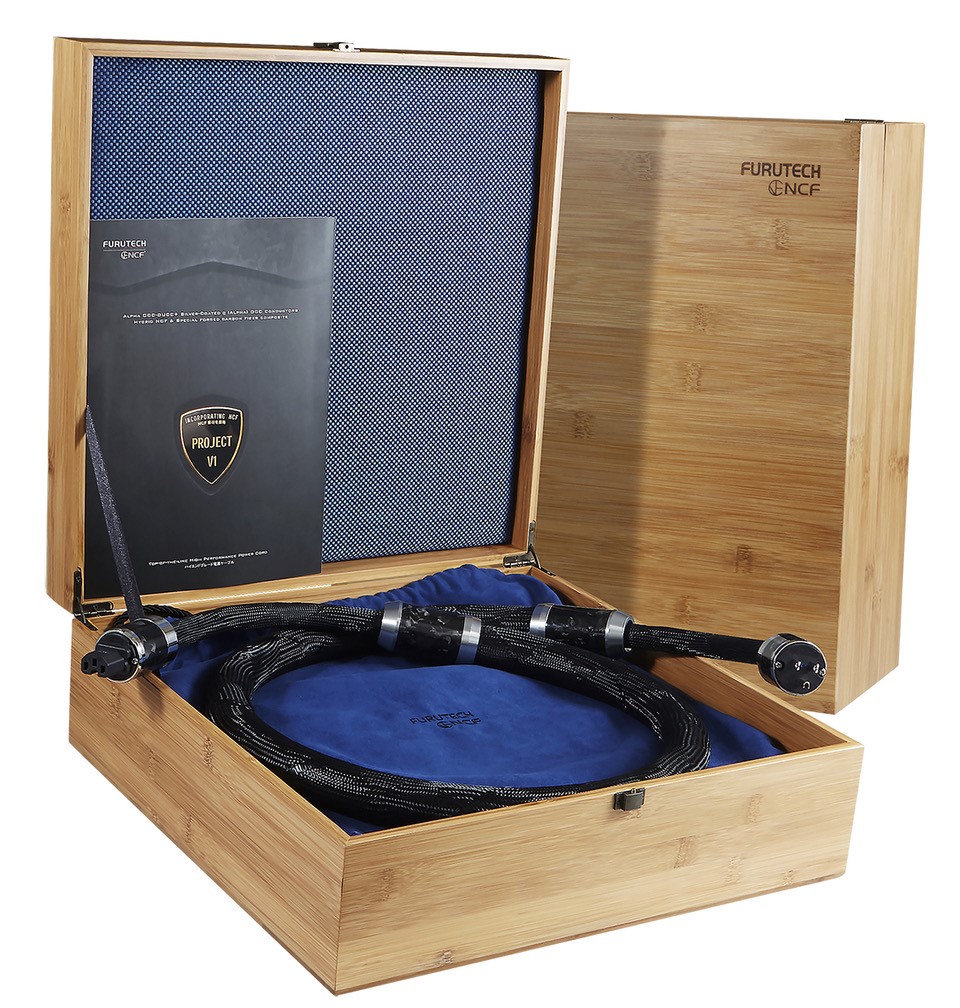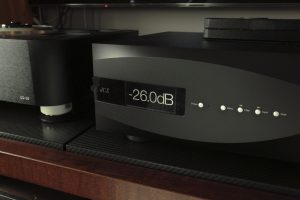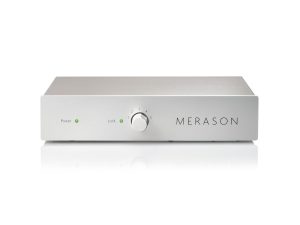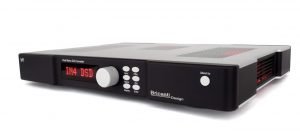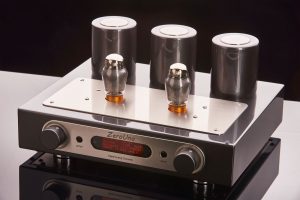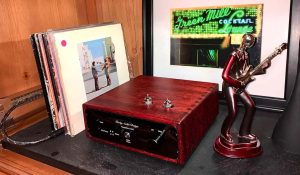Product launches happen all the time in fine audio. We have well over 300 DSD DACs now, for example, new turntables and cartridges all the time, with amps, preamps, integrateds, headphones, wireless speakers, cables, accessories, music servers, NAS/hard-drive arrays, and speakers spilling forth continuously. It seems like nearly every day I get new press releases from high-end audio companies announcing new designs, or updates to older products.
Then again, once in a blue moon, we get something new. A design that's so different, with qualities or combinations of qualities that are so notable, that we get a bit…or a lot…of a paradigm bump. (Real paradigm shifts are rare, despite the overuse of that phrase.) There may be some innovations that really advance the state of the art, but which don't change the shape of the world. The NADAC MC-8, Merging Technologies eight-channel DSD DAC, however, does beg attention as a candidate for doing precisely that. A remarkable technical achievement, it excels in so many ways, and brings enough unique innovations with it, that it stands out from the highly populated field of DSD DACs in my experience.
My notes follow…so should you.
Specifications
The good folks at Merging Technologies list the specs for the NADAC as follows:
OUTPUTS
BALANCED ANALOG OUTPUT
- Connector: gold-plated male XLR
- Impedance: 40 Ohms
- Max output level: 18 dBu (6.1 Vrms)
- Dynamic range: 130 dB(A)
- THD+N @1kHz: -113 dB (0.00022 %)
UNBALANCED ANALOG OUTPUT
- Connector: gold-plated RCA jacks
- Impedance: 20 Ohms
- Max output level: 8.8 dBu (2.1 Vrms)
- Dynamic range: TBD
- THD+N @1kHz: TBD
HEADPHONE
- Connector: 3.5mm jack + 6mm jack
- Impedance: 40 Ohms
- Max output level: 20.8 dBu (8.5 Vrms)
- Dynamic range: TBD
- THD+N @1kHz: TBD
INPUTS
AES INPUT
- Connector: gold-plated female XLR
- Input impedance: 110 Ohms
- Sample rate: 44.1 kHz—192 kHz
S/PDIF OPTICAL INPUT
- Connector: Toslink
- Sample rate: 44.1 kHz—96 kHz
S/PDIF COAXIAL INPUT
- Connector: gold-plated RCA jack
- Input impedance: 75 Ohms
- Sample rate: 44.1 kHz—96 kHz
NETWORK INPUT
- Connector: Neutrik EtherCon RJ45
- Bitrate: 1 Gb/s (Gigabit Ethernet only)
- Sample rate: 44.1 kHz—384 kHz, DSD64, DSD128 and DSD256
WORDCLOCK INPUT
- Connector: BNC
- Input impedance: 75 Ohms
- Termination: 75 Ohms, software selectable
- Sample rate: 44.1 kHz—192 kHz
MISCELLANEOUS
- Enclosure material: Premium machined and anodized aluminum
- Dimensions: 435mm (17.125") W x 435mm (17.125") D x 95mm (3.75") H
- Weight: 11 kg (24.2 lbs.)
- AC voltage: 100V-240V/47-63Hz (IEC socket)
- DC voltage: 10V-14V (Hirose HR10A-7R-4S)
- Power consumption: < 30W
- Front panel display: OLED, 160x128 pixels, 16-bit colors
General Description and Considerations
The NADAC MC-8 is a very handsomely sculpted, quite solid audio design. It is designed around Merging Technologies' implementation of digital audio processing derived from their long experience in professional settings, which goes back into the 1990s. Merging has been particularly involved in the development of solutions for DSD processing on the A/D and D/A side of the equation. This include DXD, a 384kHz/32-bit PCM standard that allows for high resolution without the issues that DSD introduces to productions that require a great deal of slice-and-dice in the digital domain. (Analog manipulations are not a problem, since they can occur prior to the final feed to DSD.)
DSD is a remarkably clean way to handle analog-to-digital and digital-to-analog conversions, but does introduce some real challenges in the realm of post-production processing, if you have to do a lot of "fix it in the mix" sorts of things (for example, global volume adjustments, EQ'ing, cross fades, multi-track additions, and the like). PCM tools like Pro Tools make this sort of thing relatively nominal, but while DSD has digital audio workstations (DAW) like Sonoma for Single DSD work that stays in the DSD domain, Double and Quad DSD solutions are still in the wind. (Not impossible; just not out there yet.)
There are other solutions to DSD editing, like Sadie, but the Merging Technologies Pyramix DAW (now at version 9.1.7, with version 10 in the wings) seems to have the most powerful and comprehensive toolset currently available for DSD, as well as for all other types of audio processing. It minimizes the need for converting DSD files completely to PCM for complex post-production work, and then re-converting them to DSD, a process that clearly puts PCM fingerprints all over the recording, and involves multiple conversions. Not a good thing, by the way.
Instead, Merging's Pyramix provides a DSD toolset that isn't confined to Single DSD (DSD64 at 2.8224 MHz), but can also function at Double DSD (DSD128 at 5.6448 MHz) and Quad DSD (DSD256 at 11.2896 MHz) rates. Having used Pyramix version 8.1.x and the Merging Technologies Horus ADDA back in the fall of 2013 to do sample 15 IPS half-track quarter-inch tape transfers to Double and Quad DSD, I know the remarkable results that Pyramix and Horus can provide on direct analog tape transfers. This is particularly true of Quad DSD, although Double DSD is a very nice sweet spot: Excellent fidelity with half the file size of Quad DSD.
But if you want the ultimate in fidelity currently available…well, you go to Quad. Hard drives are dirt cheap, and bandwidth is improving.
The Merging Technologies kick-ass 8-channel Quad DSD ADDA: The HAPI
Anyway, the point here is that the current global leader in DSD hardware and software solutions in the professional world is the creative force behind the NADAC MC-8. Given my prior experience with the superlative quality of their Horus and HAPI analog-to-digital processors with Pyramix 8 and 9, it was easy for me to believe that their multichannel DAC would be top-notch world-class, as well.
I was right.
The combination of Merging Technologies' experience with DSD out to Quad level, plus the ability to do up to eight channels (7.1, in theory; 5.1 with ease; stereo in any event, always) in up to Quad DSD make the NADAC MC-8 a very attractive and flexible unit. The integration of a solid I/O set (listed above), plus the attention to detail and deep understanding that the professionals at Merging Technologies brought to the task of dealing with DSD, and their implementation of digital playback, has resulted in a truly unique DAC.
This is particularly true in two elements. The first is the lack of a USB port on the NADAC, which has become nearly ubiquitous in the world of high-resolution digital playback, and for some very good reasons (ASIO driver development for USB 2.0, the adoption of the DSD-over-PCM (DoP) open standard for high-end audio, and the fact that most computers have multiple USB 2.0 ports, and have had for many years now). The second is that the highest resolution on the NADAC is centered on the inclusion of Merging's sturdy gigabit Ethernet (Neutrik connector, no less!), wrapped around their Ravenna ASIO and Core Audio drivers and their brilliant implementation of their Ethernet protocol, Ravenna.
While I know of one other DSD DAC that supports Ethernet, the darTZeel LHC-208 Danalogue Integrated with DSD DAC, Merging's bold move directly to Ethernet, cutting loose USB 2.0, show the professional roots of Merging and its development team. Rather than concentrate on a simple, consumer-focused solution for the implementation of high-resolution audio (USB 2.0), with its problems (mainly distance limitations due to signal attenuation, but also clock, noise, and its lack of networking capabilities), Merging Technologies went to gigabit Ethernet.
The NADAC MC-8 launch at Munich 2015 (image processing by Robinson)
This is a very revealing move. In the first place, it takes a really sophisticated design and development group to be able to take on this challenge. An audiophile company interested only in consumer solutions would stick with USB 2.0, since it is well known and relatively easy to implement: A computer with playback software and ASIO driver or DoP, a DAC, and a USB 2.0 cable between them. But professional applications (for example, recording studios, concert halls, production facilities, large multi-room installations, mastering sites) require much more complex capabilities. There is a requirement for much longer cable lengths…into the hundreds of feet…without excess noise or signal attenuation, and also with support for time-critical traffic like audio signals. There must also be support for multiple devices that can work together to accomplish audio input/output and tasks. This means networking, and the best implementation for all of this currently would be gigabit Ethernet.
The NADAC MC-8 at Munich 2015 (image processing by Robinson)
To do this, Merging developed Ravenna, a TCP/IP protocol and application set for audio over Ethernet, later fully supported in the Audio Engineering Society's AES67 standard (HERE), which Merging Technologies had helped to produce. In sum, this allowed Merging's family of devices (Horus, HAPI, and NADAC, for example) to use ASIO (PC/Windows) or Core Audio (Mac) drivers to communicate and network with one another reliably, over much longer distances and in more complex topologies. This would have to be something other than a consumer-oriented "one-to-one-with-a-short-cable" basis, obviously. Since Ravenna is fully compatible with the AES67 standard, all Merging Technologies Ravenna devices will interoperate with those of other manufacturers using AES67. This is a key point for professional settings, since large and complex implementations are not cheap, and are not easily replaced or upgraded.
Merging Technologies has provided some notes on Ravenna and Ethernet that are quite useful in understanding what a breakthrough this is, and why Ethernet is such a powerful choice for the transmission of digital audio signals:
"Ethernet comprises two major components: the physical interface i.e. the cabling and associated hardware and the protocol that manages how data is moved around the network. The RAVENNA network protocol allows for the accurate and stable transfer of very large amounts of digital audio data on an Ethernet network. On their professional recording systems it allows the transfer of up to 48 channels of DSD256 on a single Ethernet cable. When the NADAC is connected to a standard computer based digital audio source and a stereo DSD stream is being received, just over 1% of the network's capacity is being used, so it is hardly being stressed at all.
Using a utility that is installed on the computer, NADAC controls the rate at which the digital audio data is sent. Rather than being sent as a continuous stream, as is the case with standard digital audio interfaces, the data is sent in packets, which contain extra data that allows NADAC to detect if there are any errors. If an error is detected, NADAC requests that data packet is sent again. This is possible because of the high speed at which the data is sent and also, very importantly, because the incoming data is stored in a large buffer memory. The data is then clocked out of this memory using a high precision clock built into NADAC. This guarantees a very high level of data integrity, which is obviously essential in a professional recording system, where there may be only one chance to capture a performance. It also eliminates the cable and jitter related problems associated with conventional digital audio interfaces, something that has been a holy grail for audiophiles.
Another advantage of using Ethernet is that is allows several NADACs to be connected to a common music server computer, each receiving a different music data stream, so as well as offering excellent performance in conventional standalone 2-channel system, NADAC is ideal for use in sophisticated networked audio systems. In a complex system with multiple D/A converters and possibly other network devices, ensuring data integrity can be a challenge, but the RAVENNA protocol's extremely powerful data management capability ensures that this carried out very efficiently, thereby ensuring consistently excellent sound quality.
A further advantage of the Ethernet interface is that it allows long cables to be used: typically up to 100m. Thus the music server or computer may be located remotely, so that any noise it generates does not disturb the listener and NADAC located close to the power amplifiers so that the analogue cable lengths may be minimised for the best sound quality."
What this means for us as high-end audio consumers is that the NADAC MC-8 is a true professional thoroughbred, but available for us with all of its excellence in our homes. The fact that we can shift easily to gigabit Ethernet and leave USB 2.0 behind will make life much easier in our listening rooms and homes, mostly due to the fact that we're no longer stuck with the distance limitations of USB cables.
But there are some things that you will have to bear in mind as you prepare to go to Ethernet-based high-resolution playback, especially if you're new to Ethernet and local area networks…listen up!
A Digression: Setup Notes and Comments on Ethernet Topology and Layout
At this point, let's review some fundamental elements of Ethernet networking.
Many, and perhaps most of you, will already have some sort of Ethernet network in place in your homes. If you have high-speed Internet via a cable, DSL, or satellite dish, you've almost certainly got a cable modem or other connection point device in place, perhaps with an integrated router. From that, you've got a connection to the rest of your local area network(s) (LAN). This is usually a router (with a very good firewall, I hope!) with wireless access point(s) (WAP) and switch ports, or sometimes a separate switch. The WAPs allow wireless connectivity to your Internet connection. (You do have a secure wireless access system in place, right?) Your switch(es) allow hard-wired connection with Ethernet cables. This should be CAT5e cables at a minimum (supports gigabit), with CAT6 cables (better configuration with up to 10 gigabit performance) being preferred nowadays. (For more on the differences among Ethernet cabling standards, HERE.)
Your computer or computers are hooked up to this LAN either wirelessly or hard-wired. Other devices share this through one or the other of these connections: Smartphones, iPads, tablets, notebooks, TV sets/monitors, Blu Ray players, game systems, security devices, household control devices, friendly or unfriendly neighbors (if your wireless is unsecured…shame on you!)…it's an amazing, overwhelming list, really. And all of this has to be taken into account when you add audio to your Ethernet network. If you don't already have a very clear idea of what you have
Many music and audio lovers have already done this, of course, with one or more of the various streaming music services available already. Most of these are low-resolution systems, though, with 44.1kHz PCM generally being thought of as "high-resolution." (It is not, by the way.) But now we're talking about putting high-resolution audio on your local area network (LAN), and not about streaming audio over the Internet. And that's a horse of a different color.
If your LAN has a number of devices and users in the house, then two things are true:
- You have a lot of traffic, which can seriously affect the quality of audio over Ethernet; and,
- You probably need to take some steps to alleviate the problems with your audio that you might see.
Now let's look at how all of this relates to transporting audio over Ethernet, and what you will want to consider doing before bringing a NADAC into your household network.
First of all, you'll want to be sure that you are using high quality network cables in your LAN. You'll need to check the jacket on your cables; they should be stamped with some sort of identifying language stating what type of cables they are. For example, you should see a "CAT6" or "CAT5e" somewhere along the length. If you don't see any identification, then you probably have cheap cabling in place, Ethernet cable that may even be CAT5, which is not what you want to have in your network for audio purposes.
In that event, you're going to want to strip it out and replace it with CAT6 cabling. It's more expensive, but if you're going to upgrade, do it right.
You'll also want to look at your Ethernet switches. Make sure that they support gigabit Ethernet; if they don't, then they're either extremely cheap, or very old. You'll want to put new switches from a really good manufacturer in place that support gigabit. If your switches are integrated into a wireless router, then make sure that those ports support gigabit. Again, if they do not, then replace the wireless router and switch with a component that specifies gigabit Ethernet on its ports. That will generally allow you to put better wireless access points into place, as well…a nice side benefit.
Finally, you'll have to consider your LAN's topology…that is, its structure.
Generally, it's best to avoid having more switches/routers in place than you need for your local devices and traffic. Every router/switch that you add to your network adds layers of signaling and the handling thereof. Simpler is better here; reducing the number of router/switches clarifies the handling of packets on your LAN.
More to the point, the type of switch that you are using on a complex network will either be unmanaged (which is what most household LAN switches are), or managed. Unmanaged switches handle all traffic on an equal basis…all traffic is considered to be of the same priority. With computer data…documents, spreadsheets, Web pages…this is generally true, and delays are unimportant and not noticed, since you're just sipping a cup of coffee anyway.
But with audio/video data, you have very time-sensitive data. We notice problems with delays or interruptions when we're streaming media, watching a YouTube video or Netflix, or listening to a favorite Quad DSD recording on an Ethernet-based device like the NADAC. Since most households simply have whatever switch they ran down to Office Depot or Best Buy to pick up, they are running unmanaged switches. That's a problem, due to the fact that you cannot set Ethernet data traffic priorities with an unmanaged switch.
What you'll want to consider purchasing is a really good managed switch for your LAN's connection from your music server, notebook, or network attached storage (NAS) to your NADAC. The Dell 2808 managed Ethernet switch is a very good, cost-effective (right now it's on sale for $129 at the Dell Web site) option that will get you 8 managed ports (HERE). Merging Technologies recommends and supports it. What a managed switch will give you is hardware support for port management, a Web interface to administer your switch, and software that will give you an administrative program for doing this easily.
When you have a managed switch in place and its software installed, you'll be able to browse to your switch and setup your ports for what we call "Quality of Service" (QoS). You can then pick the port that you're plugging your server or notebook into, the port that you're plugging your NADAC into, and specify that those ports are to receive priority handling. This assures QoS, and is usually used for multimedia data streams. Having this in place will assure the best possible performance in your LAN, and will minimize the effect that traffic and multiple devices will have on your audio playback.
The reason that I cover all of this is that Merging Technologies recommends that you use managed switches whenever possible. If you don't want to replace an unmanaged switch, then try to make sure that you do not put two unmanaged switches…that is, one unmanaged switch talking to another unmanaged switch and then on to the NADAC…between the source and the NADAC. You can directly tie a source to the NADAC via one Ethernet cable from one to the other, but then you lose the Internet connection, of course.
In our reference listening room, I tried a direct connection, a connection with only one unmanaged switch between, and a connection with two unmanaged switches between. The first two worked very well, with no problems. When I went to two unmanaged switches between, however, I had the occasional loss of link between our notebook source and the NADAC, necessitating the closure of JRiver's Media Center 20, and reopening to reestablish the link. That can be avoided by going to only one switch between, and making sure that it is a managed switch.
I am covering all of the above so that you read the rest of my review notes with a greater understanding of the Ethernet framework for NADAC. There are many advantages in going to Ethernet, but you must consider that you aren't simply plugging in USB and RCAs here.
Cookie Marenco of Blue Coast Records and Dominique Brulhart of Merging Technologies at RMAF 2014 (photograph by David W. Robinson)
The Sound
Naturally, audiophiles and music lovers (not always the same thing) want to know how the NADAC sounds. My response would be in two parts: Listening impressions from pretty intense and continuous exposure to DSD only for four days in the PF hospitality room at THE Show Newport Beach 2015, and my listening experiences since then in our reference listening room here at PF Central since returning from THE Show.
There are obvious reasons for splitting my impressions. First, the two setups were quite a bit different, one being a show setting with all the vagaries thereof, while the other is home ground, extremely well known to me. Second, the associated electronics and speakers were considerably different. Finally—and not the least of the considerations (see below)—the cabling in these two rooms couldn't have been more unlike. And, as we'll see, this affects the sonic results quite a lot…at least, until Synergistic Research rode to the rescue! (More on this below, as well.)
The NADAC MC-8 in place on a Stillpoints ESS Rack with Kubala-Sosna Elation! cables at THE Show Newport Beach 2015
Starting with Newport Beach, our room featured the NADAC 8-channel in a stereo setup configuration in the menu system. On the Ethernet side of things, Joe Kubala very kindly loaned us a pair of Kubala-Sosna's brand new Elation! reference Ethernet cables. One two-meter cable went from my HP computer to the Cisco wireless router/switch that we used, while the other ran from the router/switch to the NADAC Ethernet input. The wireless interface was necessary so that I could control the JRiver Media Center 20 audio playback software using JRemote on my iPad3, talking to the wireless Ethernet on my HP computer. (In sum: Wireless Ethernet for the iPad3 and HP notebook, for remote control-to-computer-playback communication; wired Ethernet for DSD files to travel from Media Center 20 to the NADAC.) The entire system also was plugged into the hard-wired Internet connection in our room to allow access to the Internet, at need.
This topology allowed me to sit back in a chair in the room, and control playback wirelessly throughout the show. Media Center 20 with JRemote is a fantastic package for DSD playback at all resolutions, and iPad-based control keeps things comfortable for extended listening and demos.
We used Wave Kinetics power cables, unbalanced interconnects, and speaker cables to connect the NADAC to a darTZeel LHC-208 Danalogue integrated amplifier with Double DSD DAC, and from thence to a pair of the Evolution Acoustics MMMicro One loudspeakers on their stands. The rack that we used was a Stillpoints ESS reference rack with Acrylic shelves. Power distribution was handled by the Kubala-Sosna XPander. While compact, this system matched our room very well, and the quality of the components was certainly first-rate.
The source computer was my tried-and-reasonably-true HP Pavilion-8DT, running Windows 7 Ultimate, 8 GB RAM, a 480 GB SSD, and external USB hard drives for our various source recordings. For the entire four days of the show, these were nothing but Single, Double, and Quad DSD, which allowed the NADAC and the rest of the system to show their stuff under the constant demands of show conditions. Our recordings were supplied by Bob Witrak's High Definition Tape Transfers, Jared Sacks' NativeDSD.com (that's the address!) and Channel Classic online sites, Opus3 Records' DSD site, SuperHirez.com (go there!), and Blue Coast Records. There were some DSD rips from SACD in the mix, as well as some needle drops courtesy of the Korg MR-2000S. I also included analog-to-DSD transfers that I had done personally with the UHA Phase11S RTR recorder feeding the darTZeel NHB-18NS preamp, and then on to the Merging Technologies Horus ADDA back in the fall of 2013. This produced Quad DSDs of open reel tapes from Opus3 Records, Yarlung Records, and The Tape Project, with absolutely startling quality.
So, we weren't hurting for quality sources.
Dominique Brulhart of Merging Technologies talking about the Hapi ADDA during the Positive Feedback DSD seminar, RMAF 2014 (photograph by Robinson)
After Dominique Brulhart and I completed the configuration of the NADAC on the initial afternoon, and I got the Ethernet setup completed and shaken down, everything worked without any problems after that. We let things heat up overnight and commenced more serious listening on the following day.
I spent a great deal of time on Quad DSD (DSD256) recordings during the four days of THE Show 2015. Part of the reason for that was my natural preference for the extraordinary quality of Quad DSD; the rest of this was the need to give as many people as possible the experience of hearing Quad DSD for themselves. There are still a good many audiophiles who are unfamiliar with Double and (especially) Quad DSD audio reproduction, and who definitely need the chance to hear what they can do. Our PF hospitality room was an opportunity to do just that, and educate the sensibilities of our visitors.
Which is what I did.
We had some really great recordings, too. My direct-to-Quad transfers of the 15 IPS tapes mentioned above always astonish and gratify every group who has heard them. We had some great Quad DSD transfers from HDTT, especially the Cootie Williams in Stereo, which nuked just about everyone who heard it. (See my review HERE.) We had to play this one repeatedly for our visitors over four days. Likewise, our collection of Yarlung Records Quad DSDs (If You Love for Beauty, Vol. 1; Sophisticated Lady, Vol. 2; and Te Amo Argentina) by Bob Attiyeh were mellow crowd-pleasers. There was the spectacular direct-to-Quad-DSD recording of Ilya Itin performing the Debussy Preludes, Book Two on Wave Kinetics Records. We had Double DSDs of some unobtainium analog tape transfers (if you were there, you knew which ones these were!), and a ton of Single DSD from the folks at SuperHirez. These ranged from classical and jazz to full-out rock-and-roll to progressive rock to the blues and solo artists like Patsy Cline and Ella Fitzgerald.
In other words, we pretty much boxed the compass during our four days.
The results were really spectacular. The playback system synergized like fury, and the NADAC took all of the DSD that we played through it with complete ease. There were none of the problems that I've seen occasionally with lesser DACs in avoiding clicks or pops when jumping around in DSD resolutions, for example. There was never a failure of link, and the Ethernet connection via the NADAC provided us with flawless sound throughout.
Those are general operational observations. Digging in to the audio particulars, I'd organize my impressions this way:
The Merging Technologies team with the NADAC MC-8 at Munich 2015
Transparency
Ne plus ultra. I have not heard a clearer and cleaner reproduction of DSD at all levels than that offered by the NADAC. Readers who know my reviews will be aware of the fact that I consider transparency to be the king of audio virtues. It's the gateway through which all other audio qualities flow, and without exceptional transparency, all other elements are obscured and are less obvious.
In this case, even my years-long experience with the mighty Playback Designs MPS-5 with USB-X—pace, Ed Meitner!—as my reference standard for DSD out to 2x since 2008, is feeling…well, eclipsed. (See my notes on Ethernet cabling below for an important qualification, however.) Somehow, the NADAC has an extraordinary sense of the crystalline possibilities of DSD, especially in Double DSD, and very especially in Quad DSD.
The NADAC with the Kubala-Sosna Elation! cables has set a new benchmark for me when it comes to transparency and ease in audio playback.
Dynamics
The audio virtue of dynamics is extraordinary with the NADAC. Its listed dynamic range of 130dB (A-weighted) was in evidence with every recording that I played. The Cootie Williams in Stereo Quad DSD lifted me out of my chair, with the opening of the first song ("Just in Time") kicking me around, and not letting me go until the final notes of "Caravan." In fact, the jump factor with this brilliant 1958 recording was really strong. It elicited multiple wows from our audience over the four days of THE Show. The ability of the NADAC to handle potent Quad DSD transfers from analog tape and deliver the goods with paradigm-shifting power was clearly evident.
Ditto with other punchy recordings, like HDTT's transfer of Howard Hanson: An American Romantic, done directly to Quad DSD. This recording, featuring the performances of David Craighead and The Rochester Chamber Orchestra, and also Brian Preston and The Roberts Wesleyan College Chorale, was a delightful discover for me. The dynamic range of this recording is quite impressive, and has reminded me of the fineness of Hanson's art. The performances are filled with passion and verve, and take the audio arts to high ground indeed for 1958.
Some of my favorite Quad DSD recordings are those done by Bob Attiyeh at Yarlung Records. His 15 IPS half-track analog masters, lovingly transferred directly to Quad DSD via the Merging Technologies HAPI 8-channel ADDA, are real jewels, each and every one. Whether presenting jazz, world music, classical, or Argentinian tango, these Yarlung recordings set a reference standard for the audio arts. There's real dynamic range here…unlike, say, much of modern pop and rock, which is stuck in the nastiness of the contemporary volume wars. From whisper quiet and true silence, all the way out to fortissimo, NADAC handles the dynamics of Yarlung with aplomb, and makes it all sound so easy.
In the category of "scary good," though, is the advance Quad DSD that I have from Jonathan Tinn at Wave Kinetics Records of Ilya Itin performing Book 2 of Debussy's Preludes on a magnificent-sounding Steinway. I was not aware of Itin before I heard this recording…had never heard of him, in fact…but was blown away by the brilliance of his performance in this recording. Producing and recording this album in a split feed to pure Quad DSD and 30 IPS analog were Five/Four Productions Thom Moore (Producer) and Rob Friedrich (Audio Engineer). Never mind the fact that I am a died-in-the-wool appassionato for Debussy and the other Impressionists…this is just a bloody world-class performance, recorded at the very highest level of the audio arts. The old audiophile rule of "great recording, lousy performance" (or vice versa!) definitely does not apply with this Wave Kinetics Recordings tour de force. It's a truly masterful performance, with unbelievable dynamics; incredible feeling; remarkable tone and texture via the NADAC.
Which means that when this album is released (it's due out on both Quad and Double DSD download from the master Quad DSD, plus 45 RPM LP from the 30 IPS master tape), you simply must add it to your collection.
You'll thank me.
This was also the case for dynamic Double DSD recordings like HDTT's von Karajan The Planets, SuperHirez.com's Tea for the Tillerman by Cat Stevens, or NativeDSD.com's Naxos release of Cantate Domino. I also ran a ton of my unobtainium (don't ask!) reference Double DSD files through the NADAC, all analog transfers from tape. The NADAC simply took serious dynamic range and handled it without sounding stressed at any time. Damned impressive, without exception.
Resolution and Detail
This is an area of particular strength with the NADAC. Some of this I would attribute to the inherent virtues of DSD as a format…properly implemented, its ability to resolve the smallest details in an audio signal…but the remainder belongs to the NADAC. When you listen to demanding recordings like the Quad DSD (taken from a DXD master) of 2L's exemplary Magnificat, with highly textured chorale performances and lovely orchestral tonalities, the ability of the NADAC to render the tactile feel of the recording is simply splendid. (If you have the SACD of Magnificat, and the ability to play back the Quad DSD version, it's well worth the investment, by the way.)
Jan-Eric Persson's Opus3 Records recording of the Stockholm Guitar Quartet's Bach and Telemann transcriptions is another real reference source for me, being spacious, rich, and highly detailed in its presentation of this talented group. My own transfers of the Opus3 Records 15 IPS tapes that Jan-Eric had sent to me to Quad DSD, using the Merging Technologies Horus ADDA and Merging Technologies workstation, had turned out exceptionally well, and remain here as benchmarks. I used this recording repeatedly at THE Show 2014 (with the exaSound e28) and 2015 (with the NADAC), as a dynamite example of what the format could do to deliver our master tapes at the highest level. To have such polished performances, with the sense of attack on the guitar strings rendered in such a convincing way, is a testimony to the quality of the NADAC. I haven't heard this level of resolution in any other DSD DAC that I've heard…Merging Technologies has nailed it here.
Harmonics and Tonal Ranges
The organics of music and the audio arts are to be found in the rightness of the bass, midrange, and high frequencies, and how well a given component or system put them together. This is the home base for audio: How well we put together the frequency ranges, and how smoothly they morph from one range to the other. Do we get unity, and thus, harmony, or are there disjunctions in the presentation of the tonal range?
It is also worth pointing out that the NADAC, while doing extremely well with PCM recordings, continued to make clear the difference in quality between that and DSD. PCM, even at 192/24, still has that touch of glare, of edge, of brassy glassiness and hardness that I associate with the format. Frankly, it isn't until PCM gets up to DXD levels (384kHz) that I think that it becomes more acceptable…and even then, I prefer DSD. Especially Quad DSD, for the ultimate expression of mic feeds and master tapes.
In the case of the NADAC, I have heard the best overall harmonic presentation of DSD that I can remember hearing…and I've heard a great deal of what's out there. There's something really right about the musical values via the NADAC…really, really right. The music was natural, organic in its harmonic linkages, and holistic in its presence. No sense of "high-fi" that I've heard in some other DSD DACs, including some very expensive designs. Instead, day after day, week after week, and now, month after month, the NADAC is responsible for giving me deep pleasure in the music itself, allowing me to lose the need to critique, and simply take it all in.
The NADAC gives me the impression of rendering DSD with an essential rightness of harmonic structure. The balance and clarity of recording after recording…Single, Double, and Quad DSD…was remarkable. I adjudge the NADAC to set a new standard for DSD playback in this domain.
Accuracy…ah! That rare bird!
This was particularly notable in the Quad DSD transfers that I had done myself, since I have a very clear feel for the harmonics of the Opus3 Records, The Tape Project, and Yarlung Records tapes that I brought across. This allows me to address a major (possible) audio virtue that many allude to, but relatively few understand: accuracy.
The Merging Technologies Pyramix (version 8.1.x at the time) workstation and Horus ADDA (the silver box just behind the flat panel monitor) in the middle of another Quad DSD transfer from analog tape, courtesy of the UHA Phase11S tape recorder and darTZeel NHB-18NS preamp in the PF reference listening room, October of 2013. This is one way to know about accuracy in fine audio. (Photograph by Robinson)
As I've mentioned, the transfers of these tapes via the Merging Technologies Horus back in the fall of 2013 was an unusual opportunity for me to be able to do transfers directly from analog tape to Quad DSD on an exceptional chain: From the exceptional UHA Phase11S tape recorder to the darTZeel NHB-18NS reference preamp (functioning as an analog volume control only) to the Horus ADDA for conversion, and thence to the Merging Technologies Pyramix workstation (then running version 8.1) via a very short (7') run of CAT6. All cabling was Kubala-Sosna Elation!. This made for a world-class transfer chain.
Jan-Eric Persson of Opus3 Records at the audition of my Merging Technologies Pyramix 8.1.x and Horus ADDA DSD transfers of one of his 15 IPS half-track quarter inch tapes at RMAF 2013. Let's just say that he was ecstatic. Behind him to the left is Lila Ritsema; to the right is Bruce Brown of Puget Sound Studios, another expert in the use of DSD to transfer analog tapes. (Photograph and image processing by Robinson)
The results were remarkable. In direct A/B testing, source against Quad DSD, I really could not tell the difference between the two. Nor could Jan-Eric Persson, who heard my DSD transfer of his tape at RMAF 2013. "That's my tape!" he cried, when he heard it in the PF hospitality room. (He's right, you know.)
The experience of playing back those transfers via the NADAC recreates the experience of hearing them with the Horus ADDA: The very tape itself.
Accuracy, you see, involves the degree to which the reproduction performance of a component (actually, a playback chain) mirrors the source. That's extremely difficult to comment on unless you are either highly experienced with mic feeds and master tapes/the studio, or have direct experience with a given transfer. Otherwise, you should avoid using the term "accuracy" in your own comments, since it implies knowledge of the qualities of a source that you cannot, and do not, have.
In this case, I do have that experience, and can say with certainty that the NADAC was exceptional in its accuracy to these reference transfers that I have made. This is global-level benchmark performance.
Soundstage
All of us who love stereo sound reproduction have a deep affinity for soundstaging. This is the ability of an audio component and system to create a sense of left-right, high-low, and front-back in its presentation of recordings. Truly great stereo recordings played back through a system of excellence, properly setup for speaker placement in a superior room, will easily give you the eerie feeling of "the place itself" as you listen. With analog sources and DSD, you'll feel not only the left-right of things, but you'll also have a definite sense of up-down.
But the real payoff with DSD, just as with analog, and the quality that leaves Red Book PCM way behind in the dust, is the incredible sense of depth…the extension of the venue out through your back wall, and into the distance. I first noticed this with my very first SACD player, the Sony SCD-1, all the way back in 1999. When I spun up my first SACD…don't even remember which one, off-hand…I was staggered by the way that the back side of my listening room seemed to telescope backwards, through the wall and out into my driveway somewhere. That strong virtue has grown over the years, as the components for SACD and DSD have improved, and especially since the arrival of Double and Quad DSD recordings and DACs.
Here in the present, I will say that the NADAC stands at the head of the line in terms of soundstaging, producing an effect second only to that of a properly setup multichannel room (and those are really hard to find). Since the NADAC MC-8 does have the ability to go out to eight channels, allowing 5.1 or 7.1 reproduction, if you want to go to the multichannel level of audio, you can do so. This will lead you out from the world of soundstaging (stereo) and on to the domain of soundfield (immersive surround)…an incredible experience, but beyond the scope of my comments in this evaluation.
Imaging
Spot on, and in spades. The degree of the precision of placement, which is what imaging assesses, is amazing with the NADAC MC-8. I should note that you'll need recordings that are truly stereo, but also allow for the localization of source instruments, if you are to properly assess this audio virtue.
This is not the time to be pulling out albums that are "hard-left" and "hard-right," or "ping-pong." Nor is it the time for heavily processed multichannel recordings, where the "wall of sound" might be obscuring your ability to appraise the imaging of a component/system.
No, for the NADAC, the best of the Double and Quad DSD recordings, as listed previously, together with some Single and Double DSD transfers from RCA Living Stereo sources, helped me to get a feel for the imaging capabilities. This was very easy with RCA LS recordings like Rhapsodies and Scheherazade, or Gershwin's Rhapsody in Blue…very easy, indeed. One of my all-time references for soundstaging, imaging and timbre/texture, in any format, is the Stokowski/RCA Symphony recording of Rhapsodies. It lets me know very quickly how good a component/system is in conveying the sense of space and layering/placement of orchestral sections that is the heart of this audio quality. (OK, if you prefer something more modern, I confess to a deep delight in the Single DSD that I have of the soundtrack to Bladerunner. Love the movie; love the soundtrack; and I enjoy the placement of instruments and voices in this highly atmospheric recording. Definitely killer.)
Overall presence
It's hard to argue with the NADAC when it comes to the global sense of "the recording." Look at everything you're seeing above. It all adds up to presence that is able to convey res ipsa…the thing itself. Especially when one listens to Double and Quad DSD recordings via the Kubala-Sosna Elation! Ethernet cables and power cables (see below), the experience is simply incredible. I've never heard stereo present itself with such overwhelming power as I have with Double and Quad DSD files on the NADAC MC-8.
This has been particularly notable on direct-to-DSD recordings (e.g., Channel Classics, Pentatone, Wave Kinetics Records, and so on)…the glory of mic feeds, whether at Single or Quad DSD rates, is so satisfying and splendid that you just sit back and take it all in. There it is.
What else can I say here? It's stellar.
Reliability…and Any Quibbles?
Thus far, I haven't seen any faults or failures on the part of the NADAC MC-8. There have been only four loss-of-link events, requiring a shutdown and restart of Media Center 20, and those happened only when there were two unmanaged switches with off-the-shelf CAT6 cables between our audio workstation and the NADAC. I should note that even with the two unmanaged switches, that I haven't seen a repeat of loss-of-link since we replaced the stock CAT6 with the Synergistic Research Active Ethernet SE cables. It's been smooth sailing thus far.
The NADAC MC-8 also runs cool, even when driven for days. No hot spots; no warm spots, even. This has been true even with Quad DSD. This alleviates any concerns that I might have for future reliability issues. The NADAC MC-8 is cool in more ways than one!
In fact, the only thing that I can think of here is that Merging might want to consider a remote control for the NADAC...it would be handy, and most consumers expect it. But it's not the end of the world: I control volume with my analog preamp remote, anyway.
And that is a pretty small quibble sheet, amigos.
About Ethernet Cables, Power Cables, Power Distribution, and Sound Quality
I do have to say some things about the NADAC MC-8 and cabling, since this is an exceptionally important caveat for our readers to understand.
One thing that I learned very early on in my years with high-end audio is that cables make a difference, and often a huge difference.
Some people question that. Some people argue the point violently.
Yes, and some people believe that there is no racism in America, either. And they're wrong, too.
In the case of power cabling, there is simply no gainsaying the need for top-notch power cables and, if you're using one, power distribution (including AC adapters). With the NADAC MC-8, I've used the Kubala-Sosna Elation! power cables and Ethernet, which are truly world-class, and in a complete Elation! system, are nothing less than stunning. I've also used the Wave Kinetics power cabling and interconnects…that's what I had at THE Show Newport Beach 2015…with excellent results. Right now I am trying the NADAC with the Tara Labs Omega Evolution power cable, and find that combination to be superb, the Omega Evolution also being a world-class, top-notch power cable.
Our power distribution unit is the incredible Kubala-Sosna XPander, which continues to knock me out with the magic that it brings to an audio system…especially one that is 100% Elation!-based. If you aren't using an XPander, you really don't know what the synergy of your system is capable of…and that's not marketing bullshit.
But the point here is, regardless of your preference in cabling, you will really have to be sure that you provide the very best possible if you are going to get the most out of an investment in the NADAC MC-8. That includes power cables, XLRs (preferred), and Ethernet.
Yes, the Ethernet cable(s). I'm going to underline this pretty heavily, so pay attention.
I've done some comparisons between the sound of the NADAC MC-8 at THE Show, when we had the Kubala-Sosna Elation! Ethernet cables, and back here in PF River City, where I've had to step back to standard CAT6 while waiting for Kubala-Sosna to ramp up their Elation! Ethernet cable production. According to Joe Kubala, they're waiting for manufacturing quantities of their parts to arrive. Meanwhile, the collapse in the quality of the sound is really noticeable. The NADAC is operating at a completely new level, but this means that it will be merciless on inferior recordings, and will immediately reveal inferior supporting components. That too will be merciless.
Anyone planning to spend the $11,500 necessary to purchase the NADAC MC-8 is going to have to be sure that they get world-class Ethernet, power, and interconnect cables. Otherwise, the ability of the NADAC to give you the very highest level of resolution and performance will be definitely harmed…and not by just a little.
In other words, why purchase a race horse and hobble it? Why buy a Porsche and put mediocre tires on it?
Yes, it's that important. You have been warned.
Stop the Presses! The Arrival of Synergistic Research Active Ethernet SE…
There I was. In the slough of despond.
Kubala-Sosna has been waiting for parts on the Elation! Ethernet cable that had impressed me deeply at THE Show 2015. Joe Kubala is a great fellow, and a close friend, but you can only do what you can do, as they say in Joisey.
Meanwhile, I had settled in with the NADAC MC-8 for the indeterminate season of Ethernet twilight with my stock CAT6 cables. Maybe I'd listen to a ton of Blues; maybe lots of Requiems. Heck, maybe I'd just go out and read audio discussion board threads from the knuckleheads who say that cables can't/don't make a difference, or that bits are bits. You know: Pass the time with the ignorant and obnoxious.
Cheers! Peter Hansen of Synergistic Research celebrating the triumphal installation of several SR accessories, including their Active Ethernet SE cable system (photograph by Robinson)
Meanwhile, the time was at hand to host Peter Hansen of Synergistic Research here at PF Central. Rewind: We had staked out a time in the aftermath of some discussions that Ted Denney III and I had a few months back about SR's Atmosphere. Ted had demonstrated the Atmosphere at RMAF 2014 in Philip O'Hanlon's On a Higher Note room, and I had come away very impressed with the ability of that system to alter the acoustical properties of Philip's room. Naturally, though, I told Ted that I really needed to hear the Atmosphere in our reference listening room back here in River City. He promised…time went by…we talked again in 2015…more time went by…and then we finally connected in the summer.
Ted Denney III of Synergistic Research blowing my mind at RMAF 2014 with his amazing Atmosphere and its ATM. You were right, my friend! (Photograph by Robinson)
As it turned out, Peter Hansen was delegated to make the trip. I'll be sharing the results of our 2.5 days together shortly…suffice it to say right now that the SR system of devices (more than just the Atmosphere) was remarkable!
What I do want to mention immediately, however, is the extraordinary transformation of the sound of the NADAC MC-8 when I pulled the stock CAT6 out of the link between Media Center 20 on our notebook server and the NADAC, and replaced it with two Synergistic Research Active Ethernet SE cables. (One 6 meter cable went from a Cisco wireless-router/switch to an intermediary Cisco switch; the other was a 3 meter cable that went from there to the NADAC MC-8.) Both cables had a special power module and cable for the active shielding at the source side, plus a photonic heat sink and tuning module (gray for warmer sound; silver for space and detail, which is what we ended up with).
Frankly, I wasn't sure what to expect, since I had never heard the SR Active Ethernet SE cables demoed before. I knew that there had to be an improvement…nothing could be worse than the sonic collapse that I had experienced with the stock CAT6 cables here.
I needn't have been concerned. The results were nothing less than spectacular! In a moment, the performance of the NADAC returned to the brilliant sort of presentation that I had known at THE Show Newport Beach. With the gray tuning module, the sound was warmer, more enveloping, but still parsecs ahead of stock CAT6. When we shifted to the silver module, the sonic presentation immediately opened up and became more spacious and detailed. It was perfect for the NADAC and the rest of the reference system (Audionet electronics plus Evolution Acoustics MM2 speakers)…it stays!
There was no doubt about it: The Synergistic Research Active Ethernet SE system had rescued the NADAC link from the mediocrity of the stock CAT6 cables, and had saved me from an extended and dreary set of the blues. This allowed me to confirm my impressions of the superior capabilities of the NADAC MC-8 here in my reference room, and to do so with full confidence.
So I heartily recommend the Synergistic Research Active Ethernet SE system for the NADAC MC-8, and for audio Ethernet applications generally, just as I have already done with the Kubala-Sosna Elation! Ethernet. This is righteous stuff! (Pricing: Synergistic Research Active Ethernet SE, MSRP $ 550.00 for the first meter—MSRP $ 200.00 per additional meter. Contact Synergistic Research for more information).
Conclusion…And a Certain Shock of Recognition
Well, what can I say? In a year that has been notable already for some exceptional new equipment, setting new standards of the possible, and establishing new benchmarks for audio reviewers and the possibilities of the audio arts, along has come the Merging Technologies NADAC MC-8. I have known and love other first-rank DSD DACs, at several different price ranges, but the NADAC is superlative in so many ways that it's hard to see another product at the current time that isn't racing to catch up.
Now, I cannot be categorical of course, since so much is changing and progressing in the audio arts. For example, as I sit here writing this, the Lampizator Golden Gate, their reference-class Quad DSD DAC with SET tubed output and which is in the same general price class as the NADAC MC-8, is just starting its warm-up for an extended review here at our reference listening room at PF. There are those who have already proclaimed their strong pleasure at the results with the Golden Gate, although relatively few have had the sort of extended experience that we will have here. I also have the latest iteration of the Playback Designs IPS-3 integrated amp with its new Quad DSD capabilities. As usual, Andreas Koch is showing his rare genius with things DSD…stay tuned on that front, as well.
Nevertheless, the shock of recognition that the NADAC MC-8 brought to me…the ability to hear how incredibly real, how truly accurate DSD playback could be, especially and Double and Quad DSD levels…was pretty profound. The package of features and performance that the NADAC MC-8 cannot be gainsaid, and seems to stand pretty much alone in the world of DSD playback presently. Eight-channel output, the state-of-the-art Ravenna audio protocol, delivered via ASIO over gigabit Ethernet, multiple input options (not including USB 2.0…but if you have gigabit Ethernet, why would you bother with USB 2.0, or any of the others, frankly?), exceptional analog performance, intelligent menuing, LAN-based device detection and control, and all in a beautiful machined, eye-catching aluminum chassis. What's not to like?!
In fact, nothing. After two and a half months of constant use, I have no caveats to share with you, and no bones to pick with Merging Technologies. It has been a world-class reference-level experience all the way around.
Merging Technologies has brought the larger world of professional audio gear into our world of consumer high-end listening rooms, with all of the benefits thereof. I am listening to the results here at PF Central, and am deeply impressed. This is the real deal, setting a sonic performance benchmark that other DSD DACs will have to address.
In fact, I have nothing but praise for the Merging Technologies NADAC MC-8, and have made the arrangements to purchase the review sample. It will take its place as the new reference for DSD DAC playback here at Positive Feedback.
Yes, it's every bit of that good.
Just remember what I've told you about constructing your network topology effectively for high-resolution audio playback, and about cabling. Don't gut your race horse!
I guess that you can see this one coming. Yes, this is a real rave from me. And isn't there cause? The NADAC is brilliant in every way, and has raised my delight in our reference DSD library to new levels…and my delight was already very high!
If you have the budget to play in this range, there's simply no question that you need to put the NADAC at the top of your list of DSD DACs. If you can't get to a show or another site that's equipped with one to hear it for yourself, I'm going to go out on a limb and tell you that I would recommend a purchase, regardless. I'm confident that it's really that good…it's the best that I've heard in DSD and high-resolution PCM/DXD DACs to date.
Period.
Run. Do not walk. Get what I'm experiencing for yourself!
The Merging Technologies NADAC stereo version, rear view
By the way, if you are not interested in an eight-channel NADAC DSD DAC, Merging Technologies does offer a stereo version for about $1,000 less. Check with your dealer or distributor for details.
Merging Technologies NADAC MC-8 price: USD $11,500
Merging Technologies
http://nadac.merging.com/nadac
[email protected]
USA Distributor
On a Higher Note
Phillip O'Hanlon
P.O. Box 698
San Juan Capistrano CA 92693
Phone: +1 949.544.1990
Email: Fill out the form at http://onahighernote.com/sales/
[All photographs courtesy of Merging Technologies, except as noted.]




